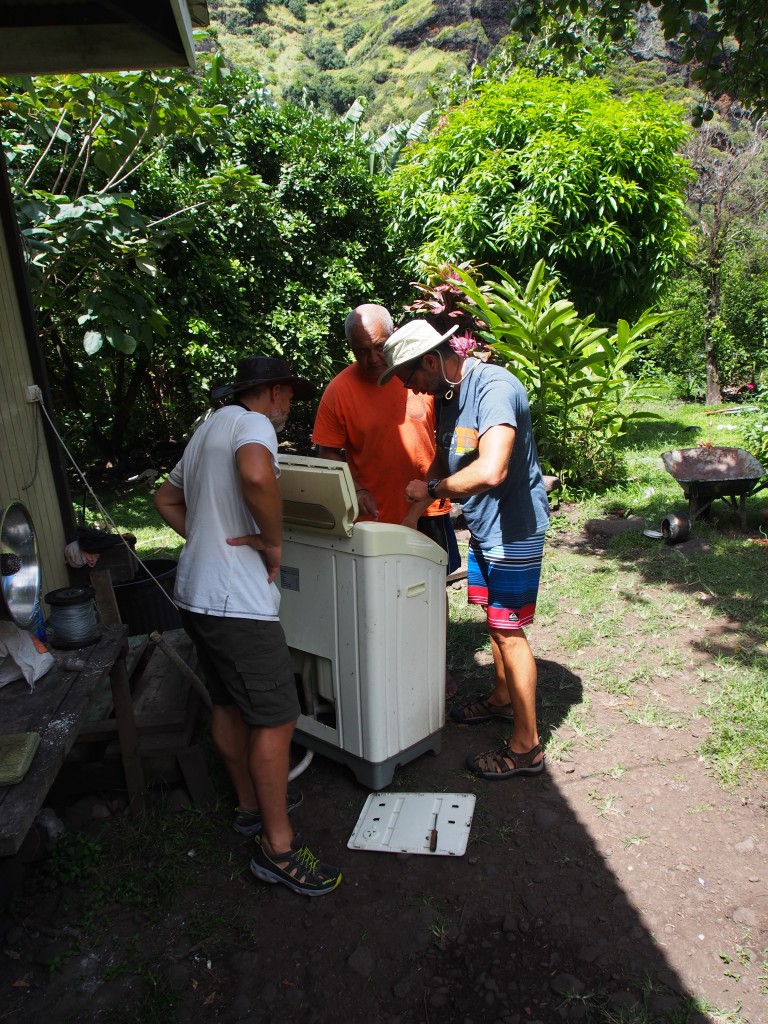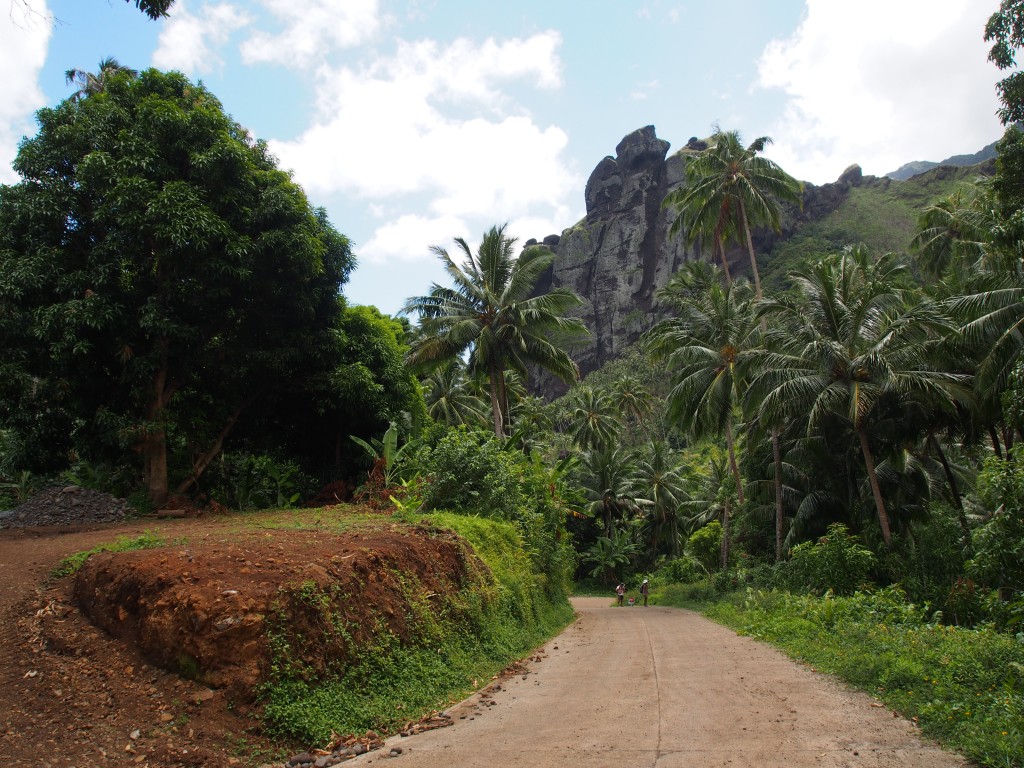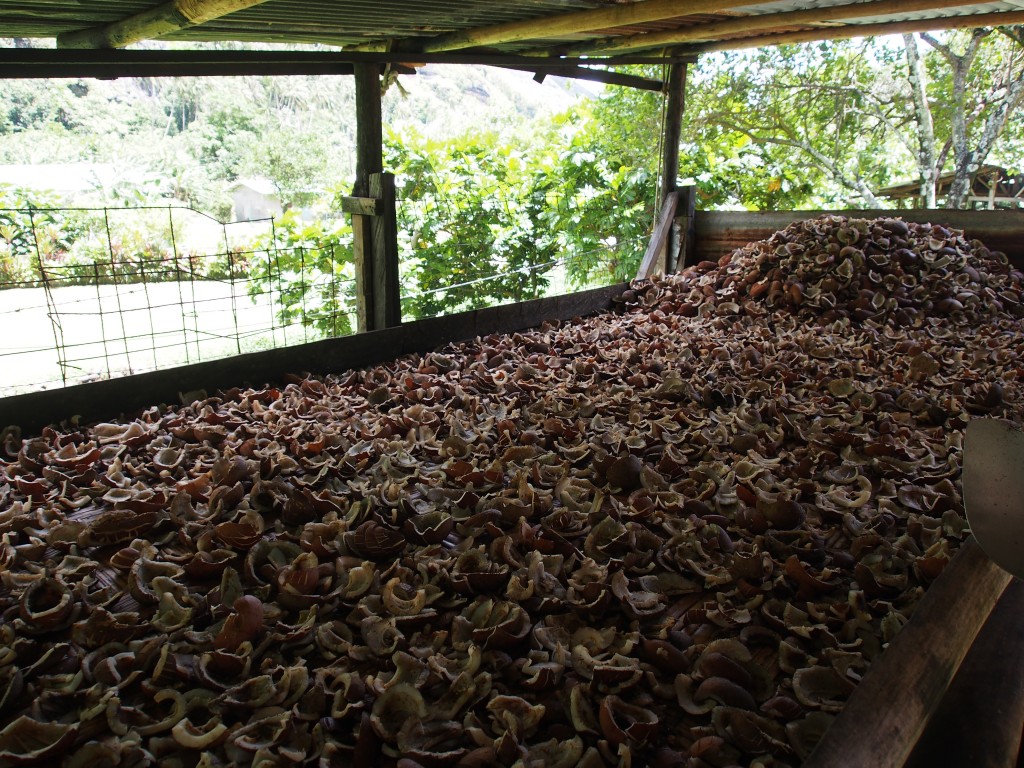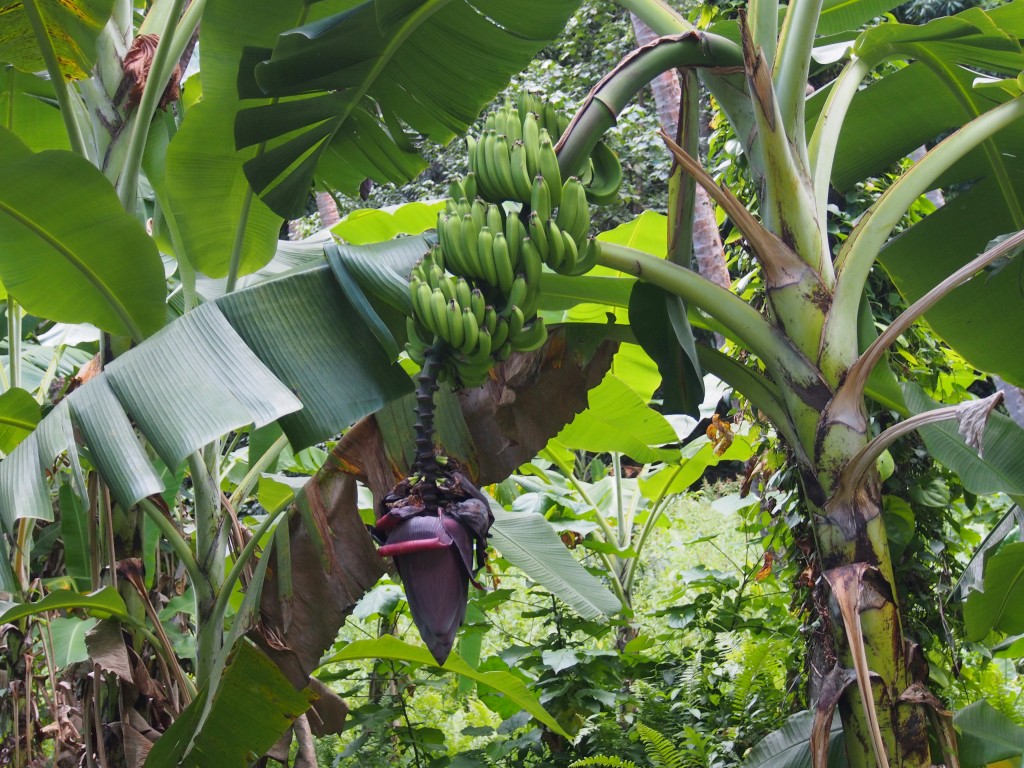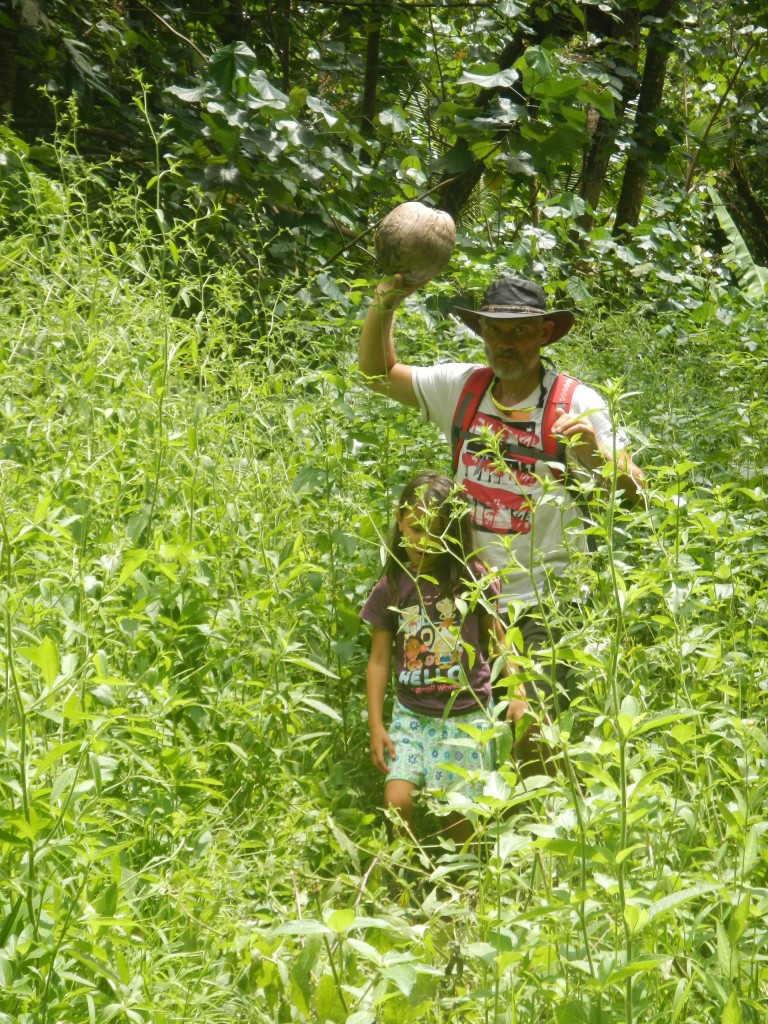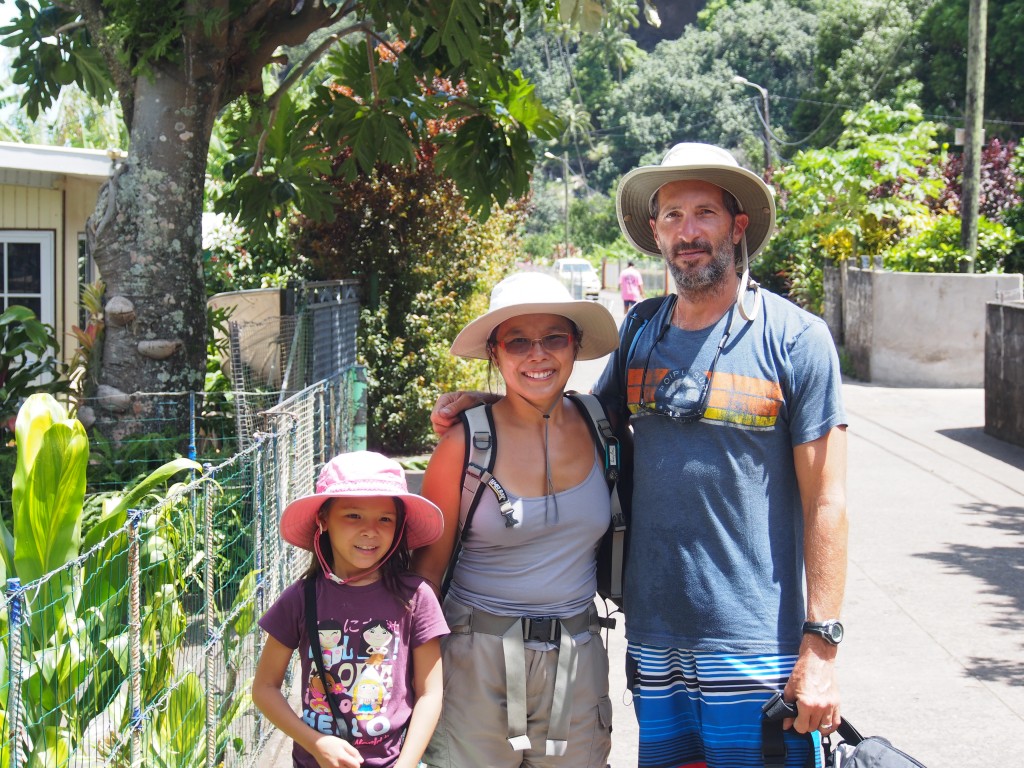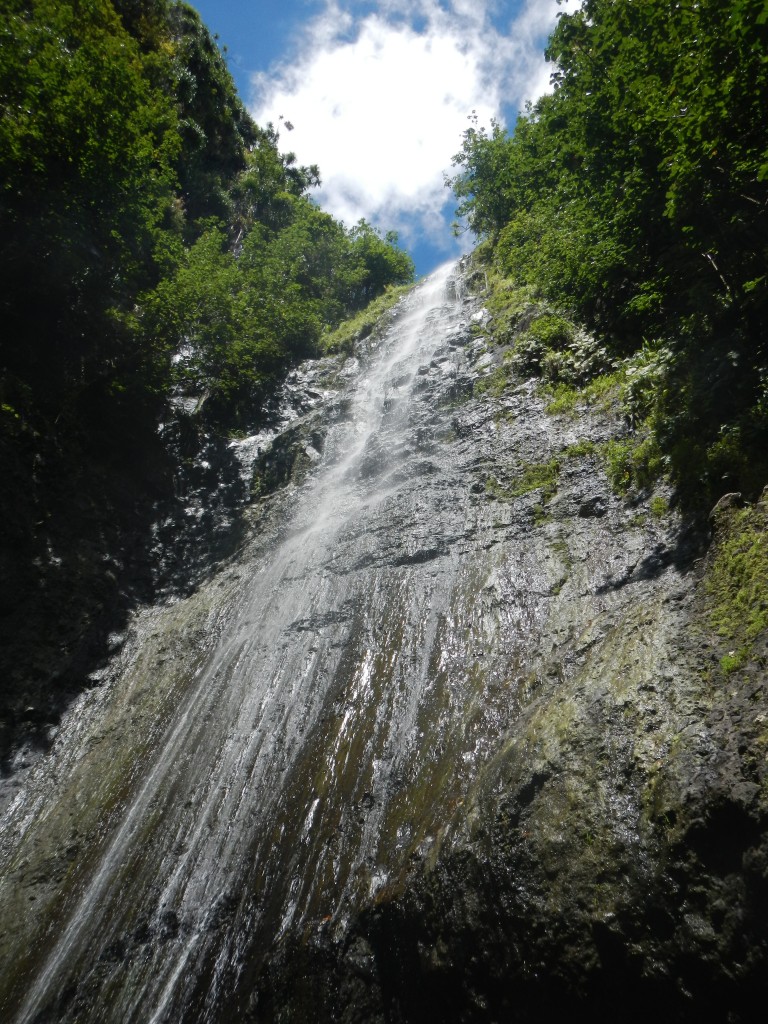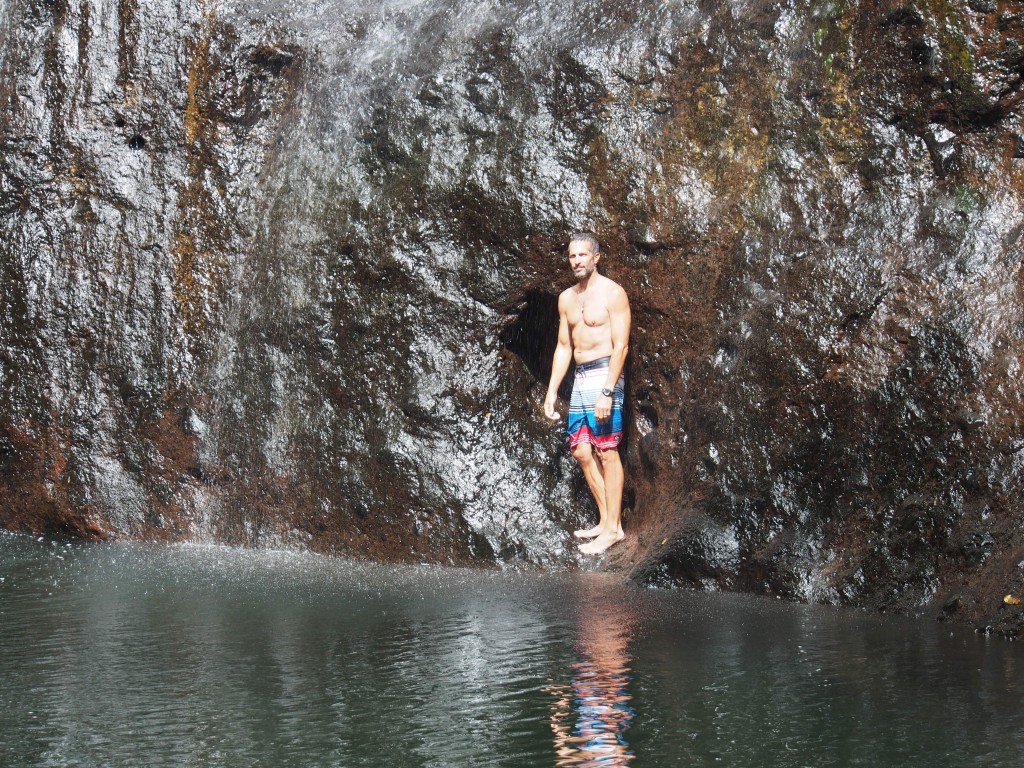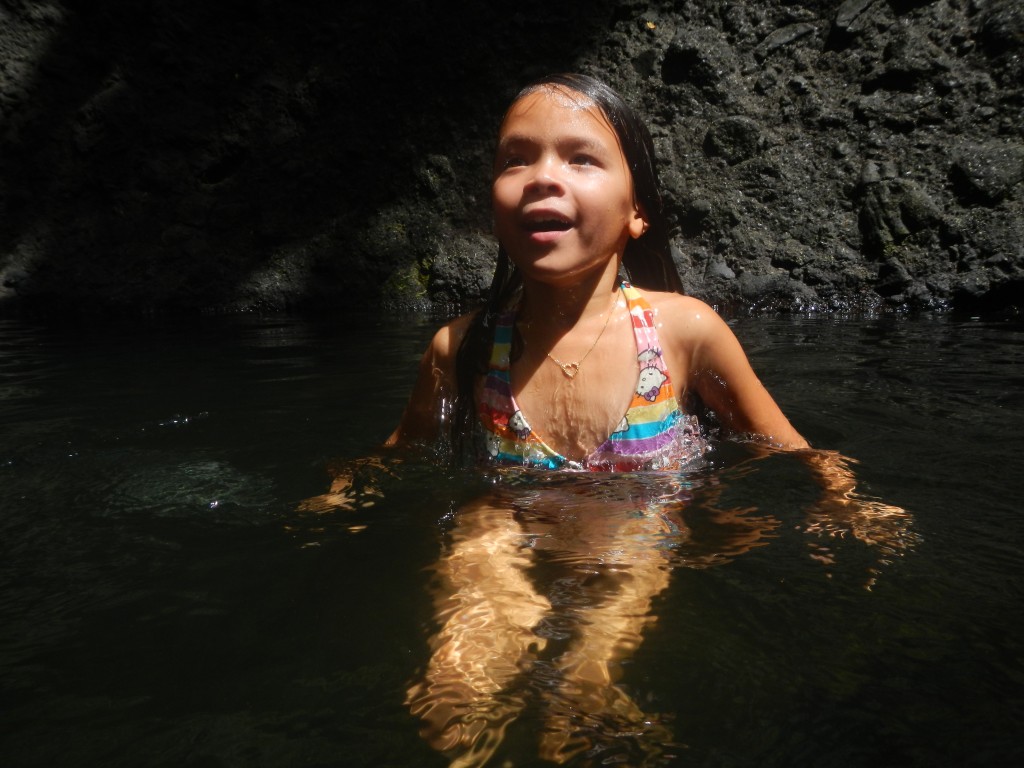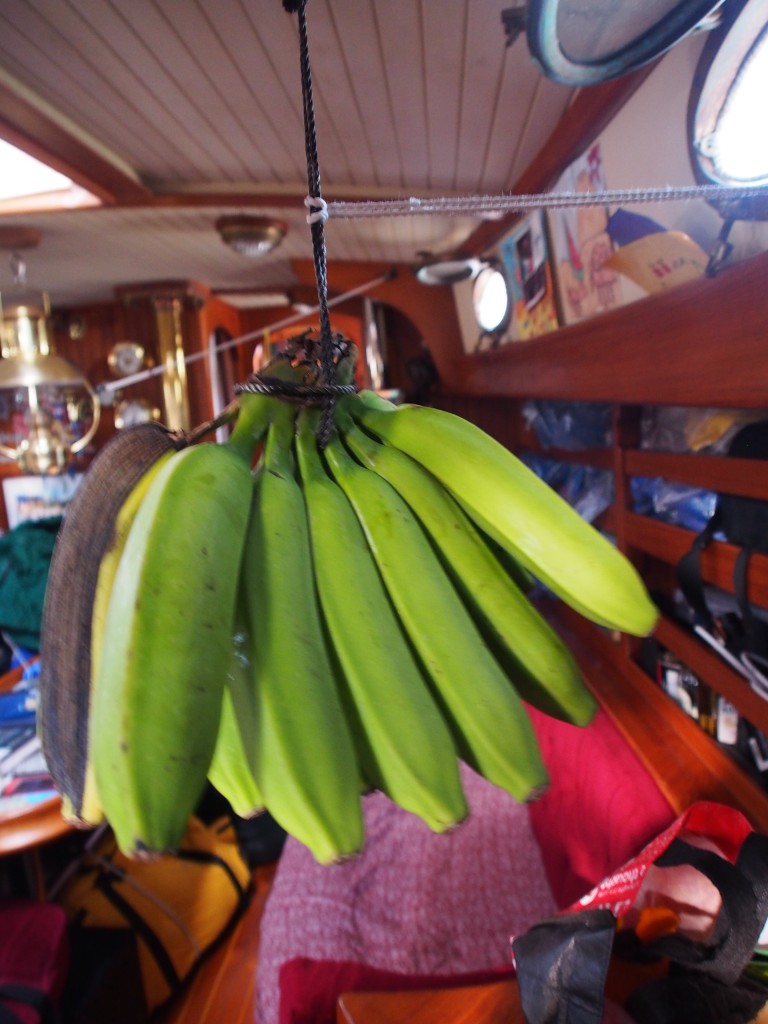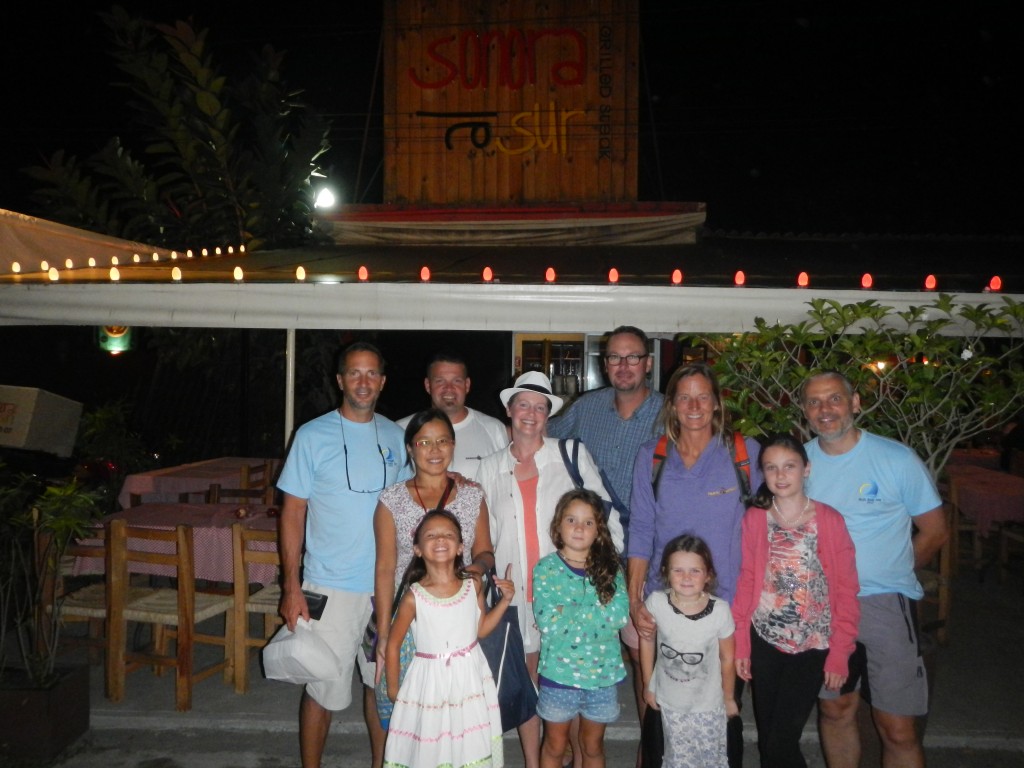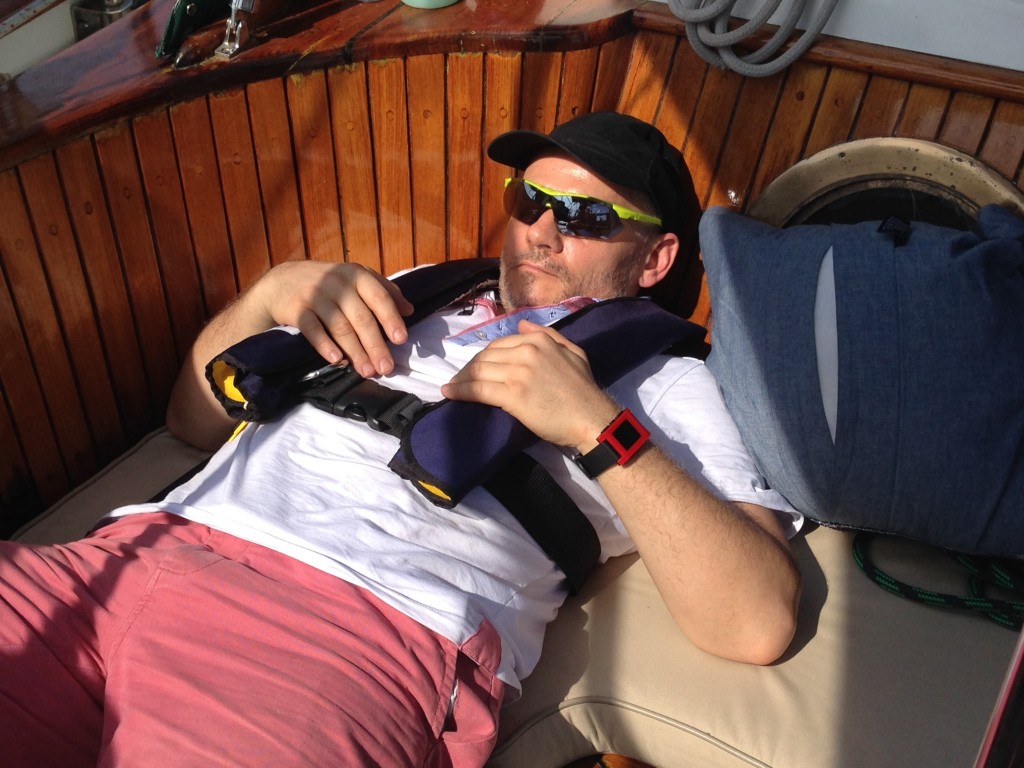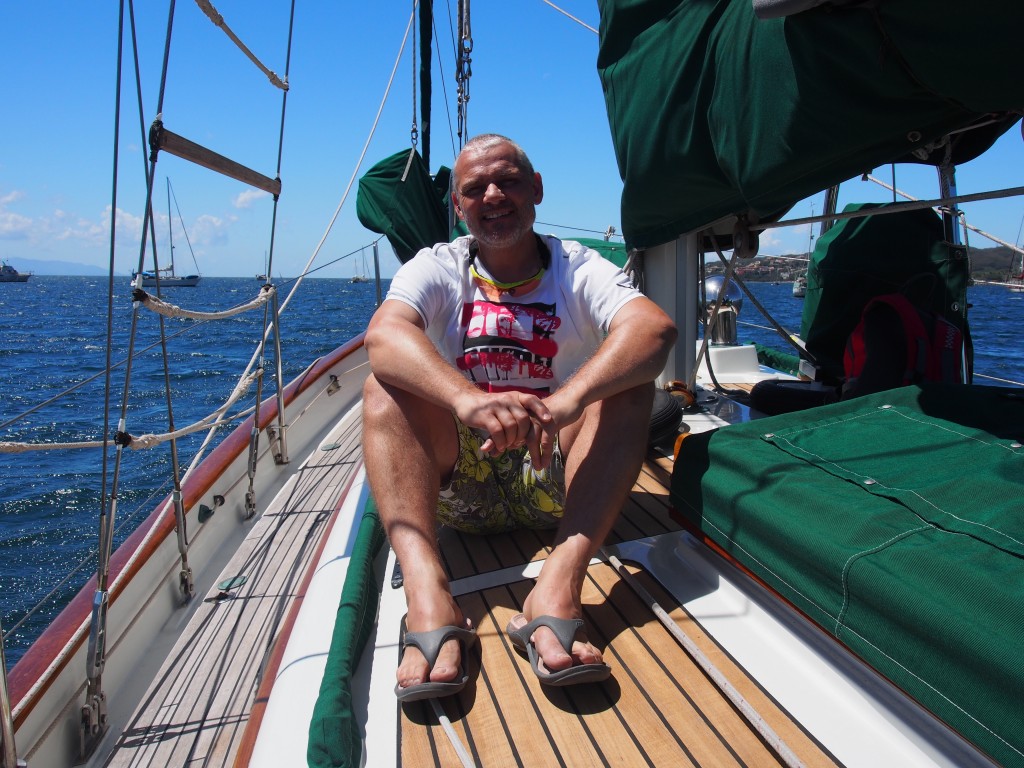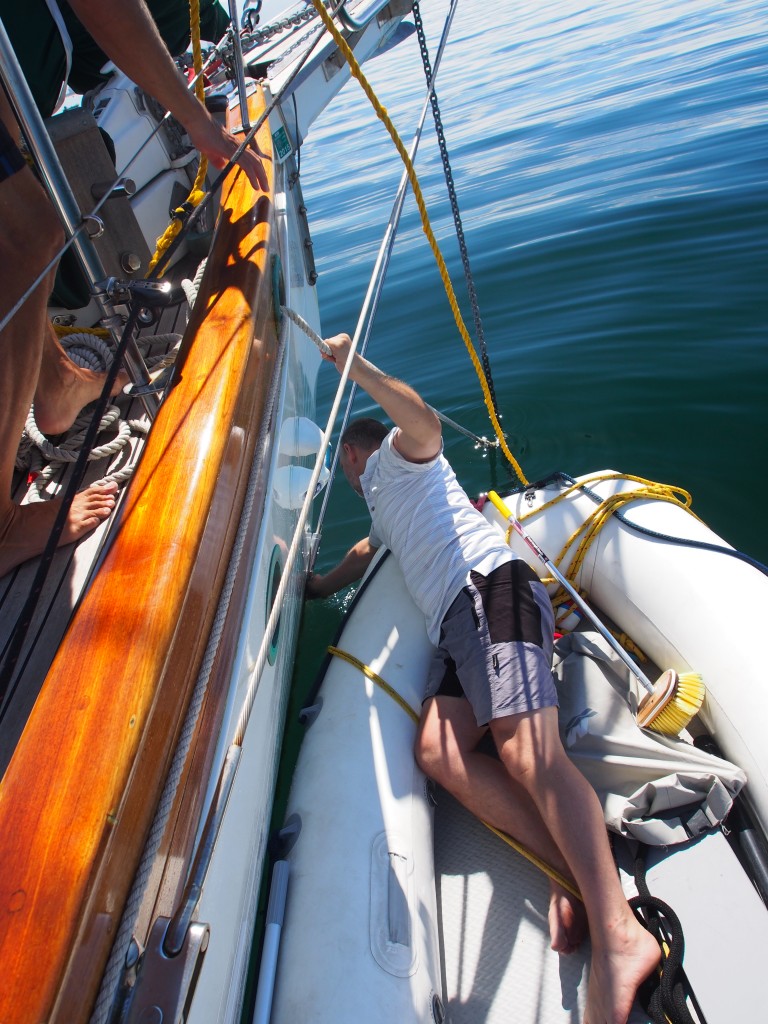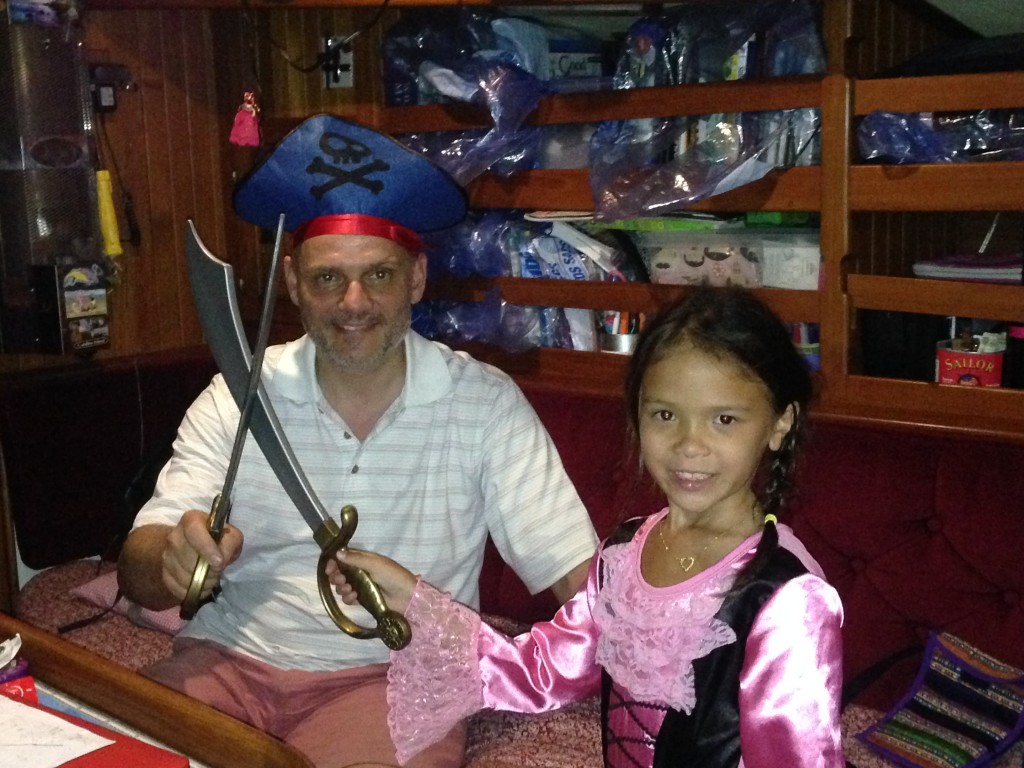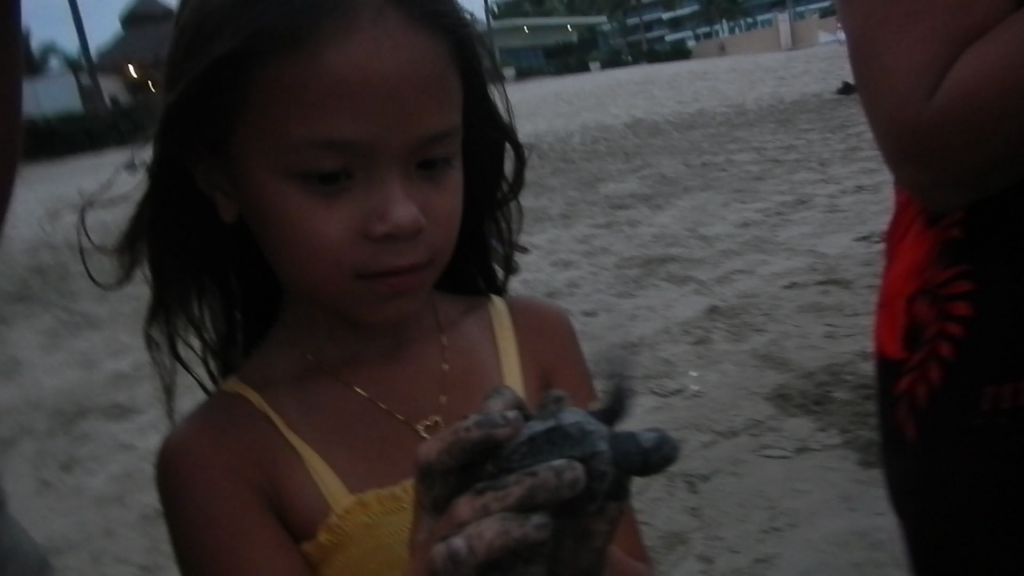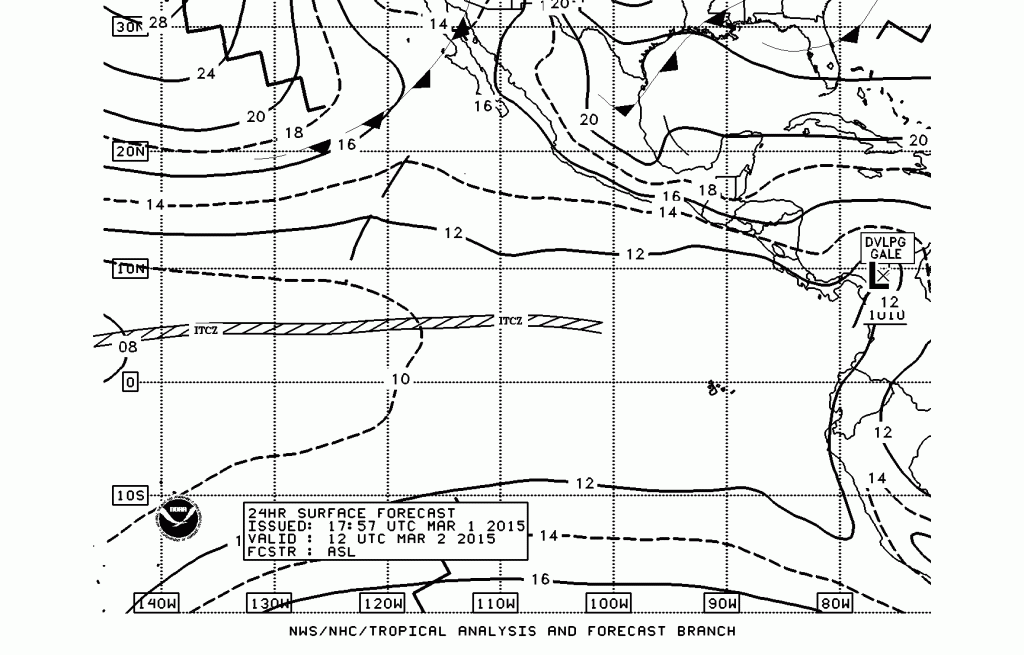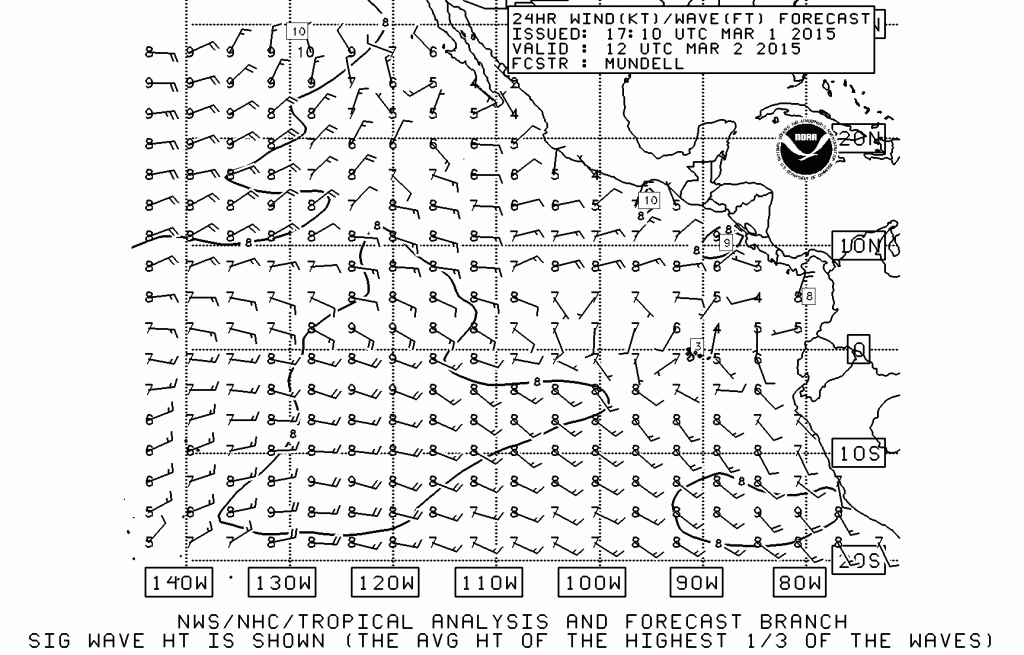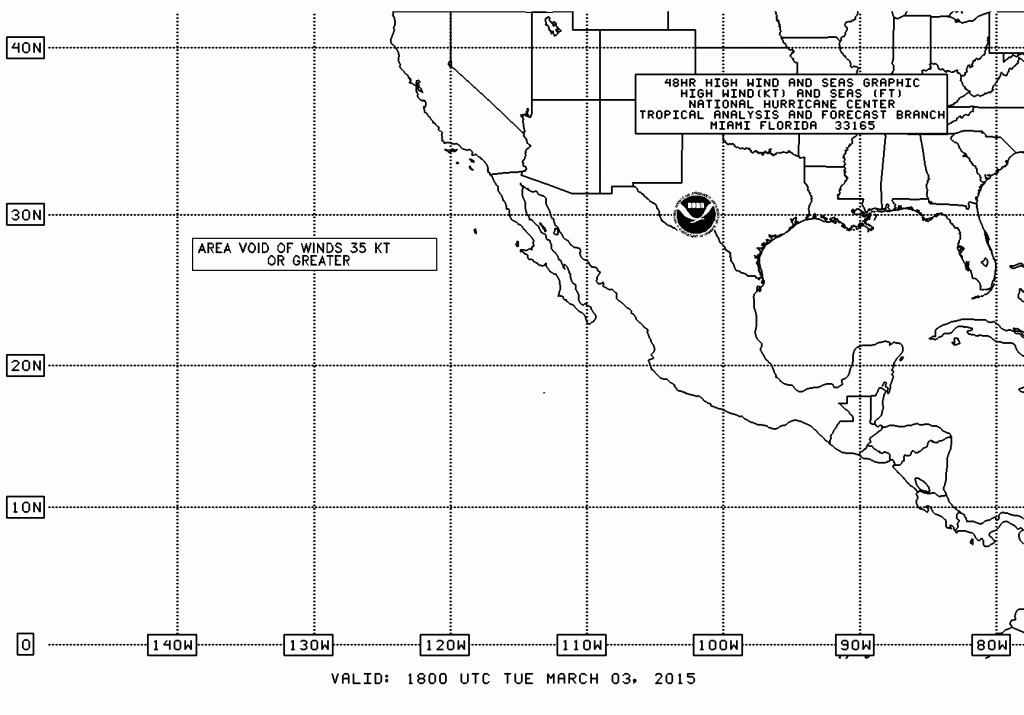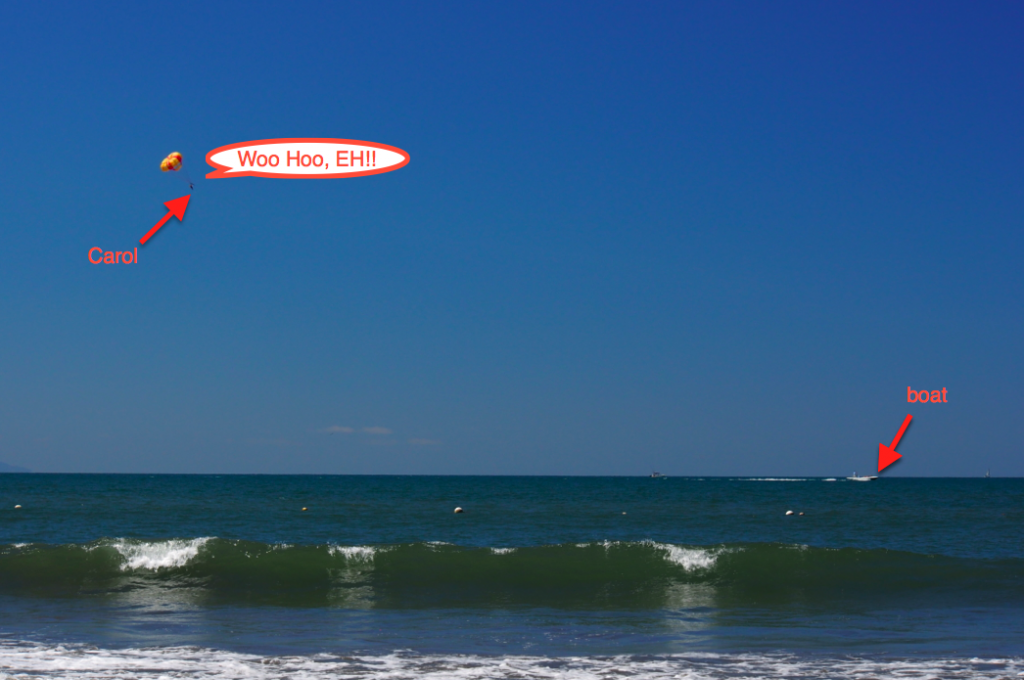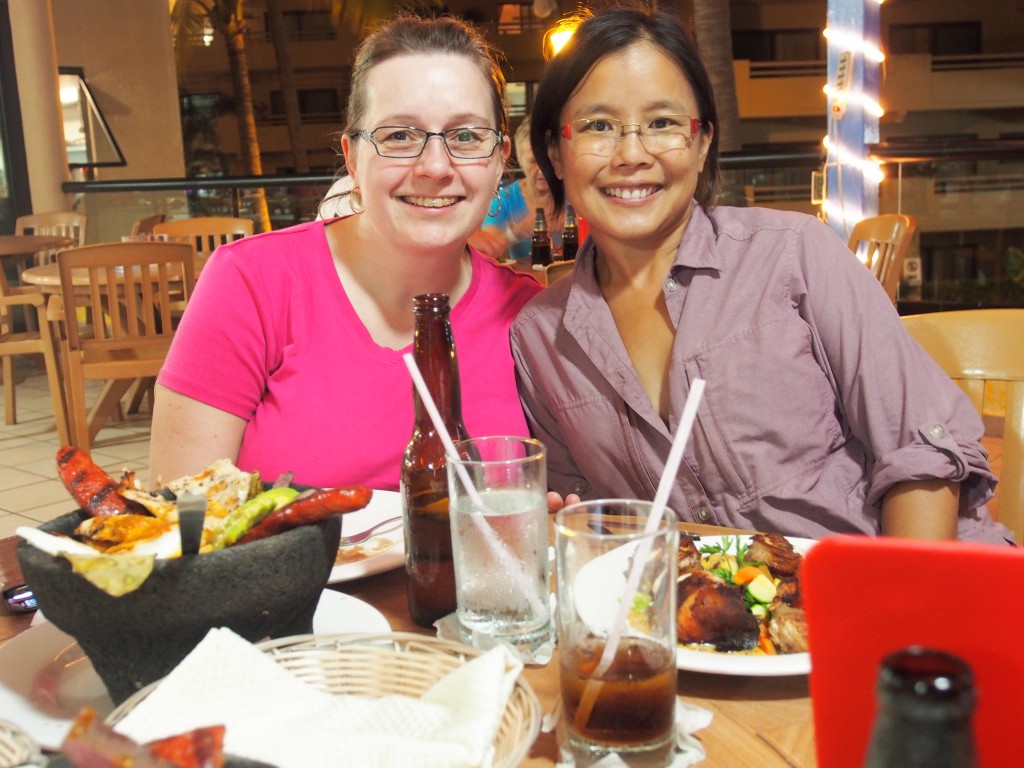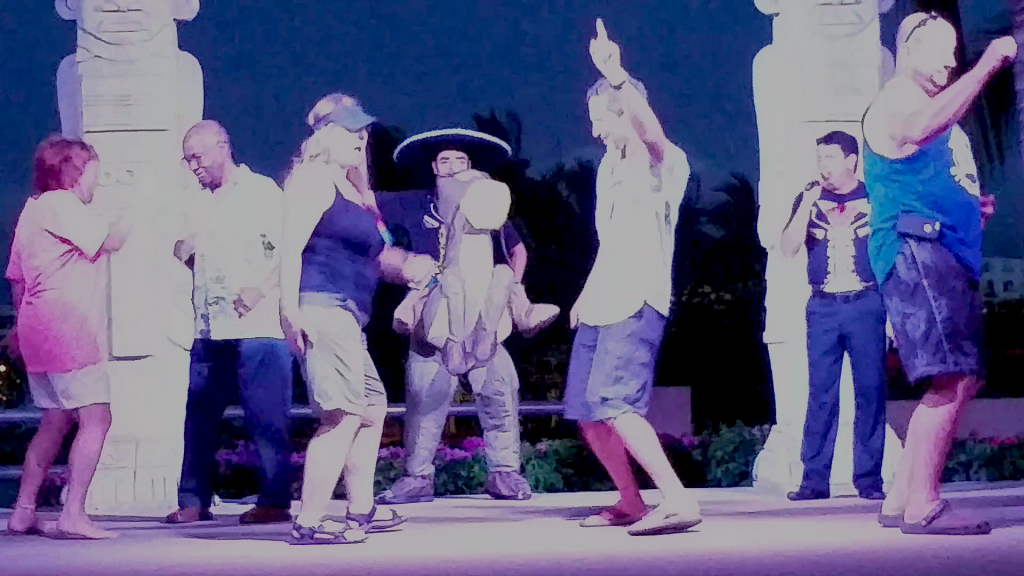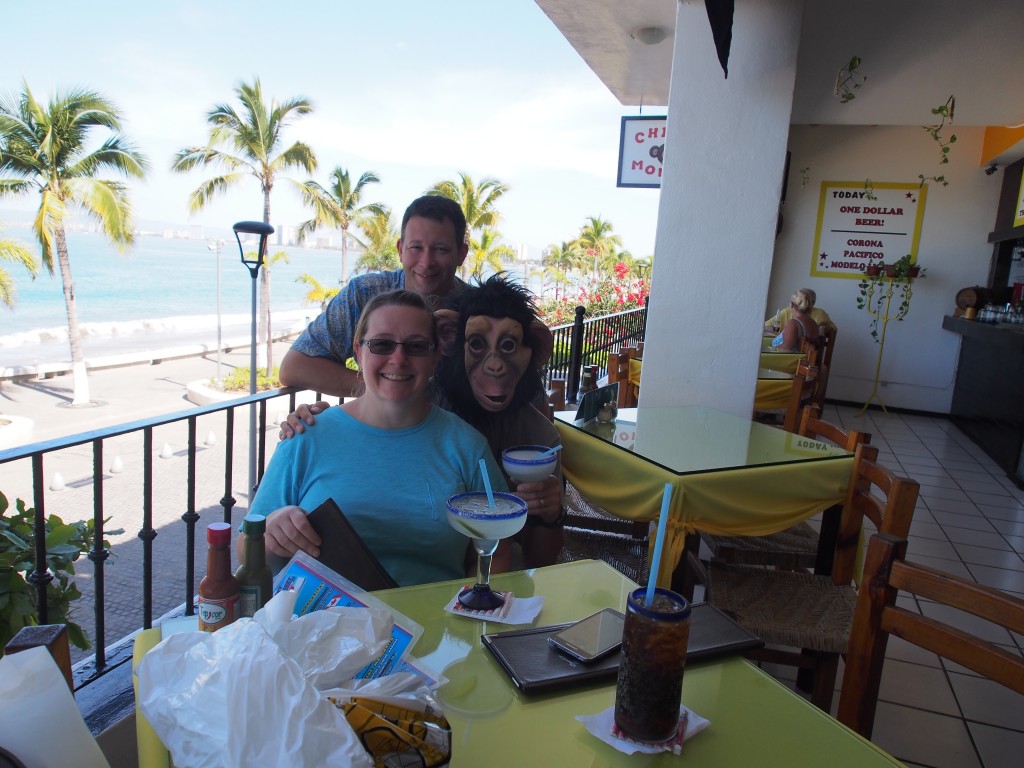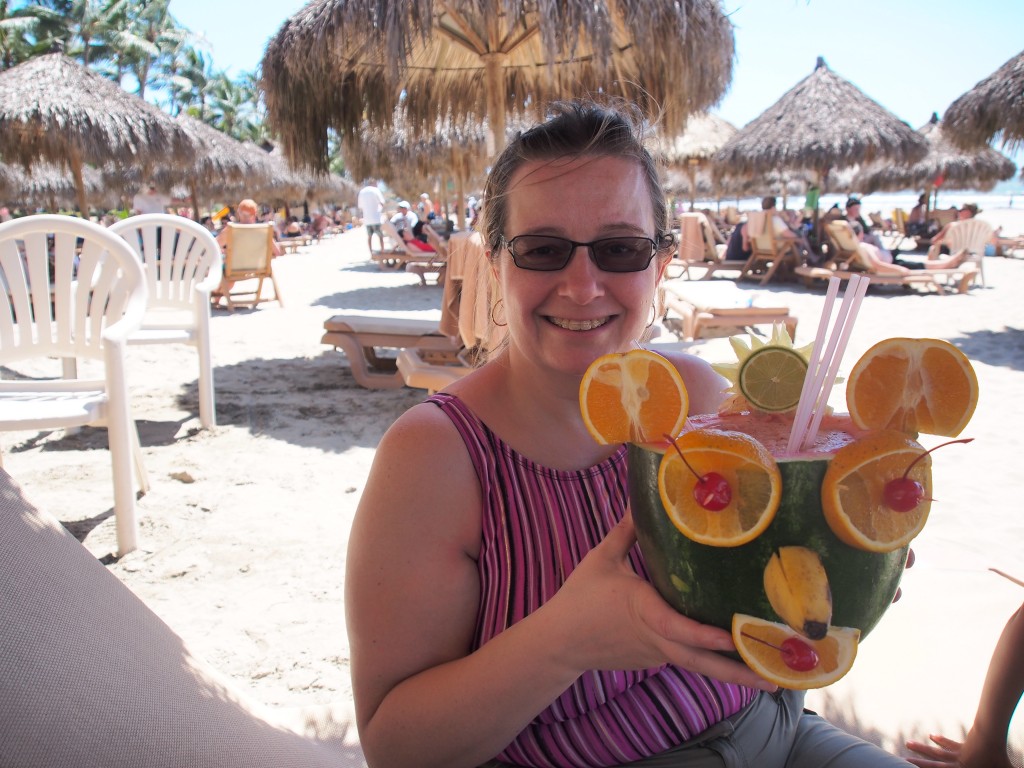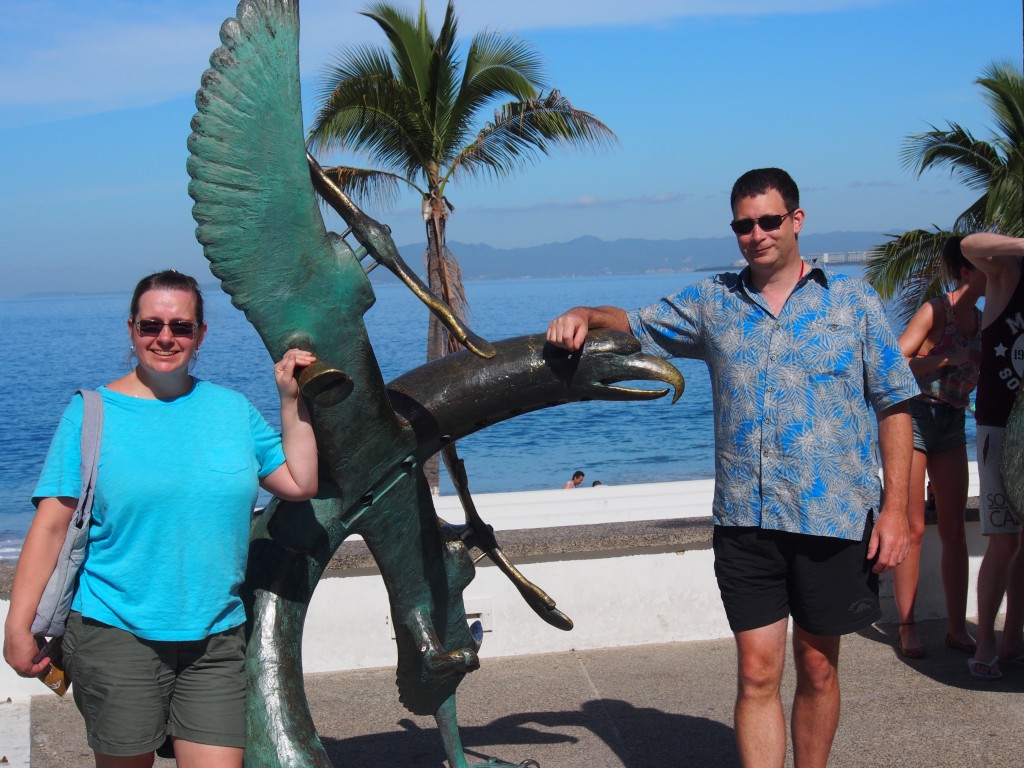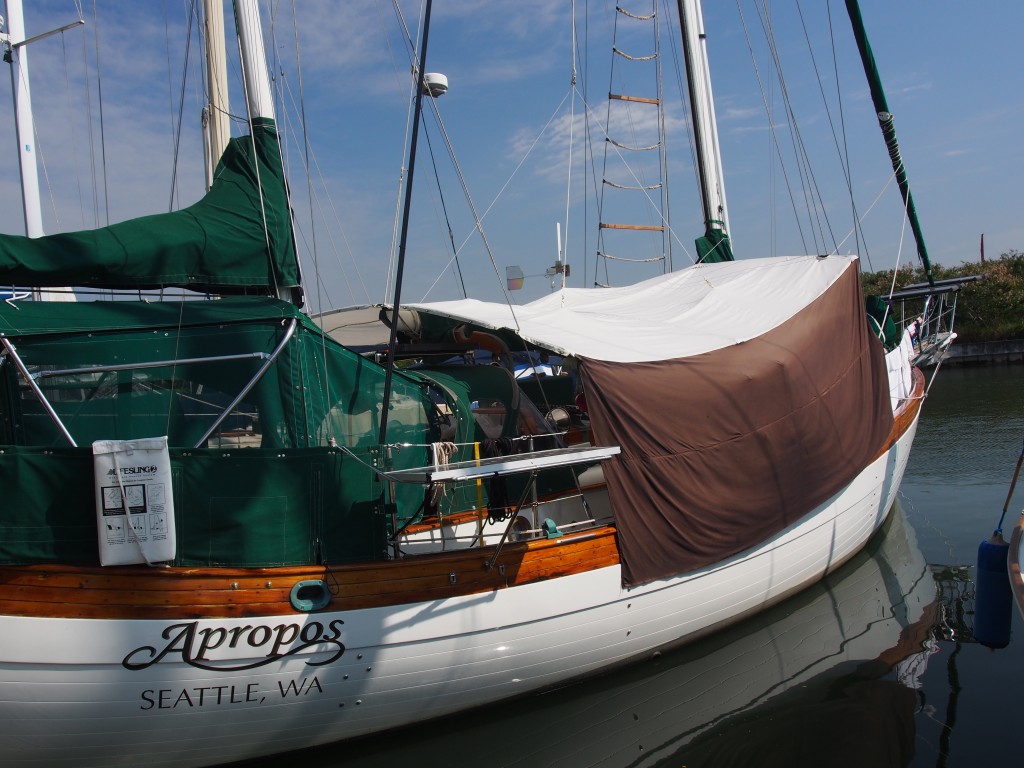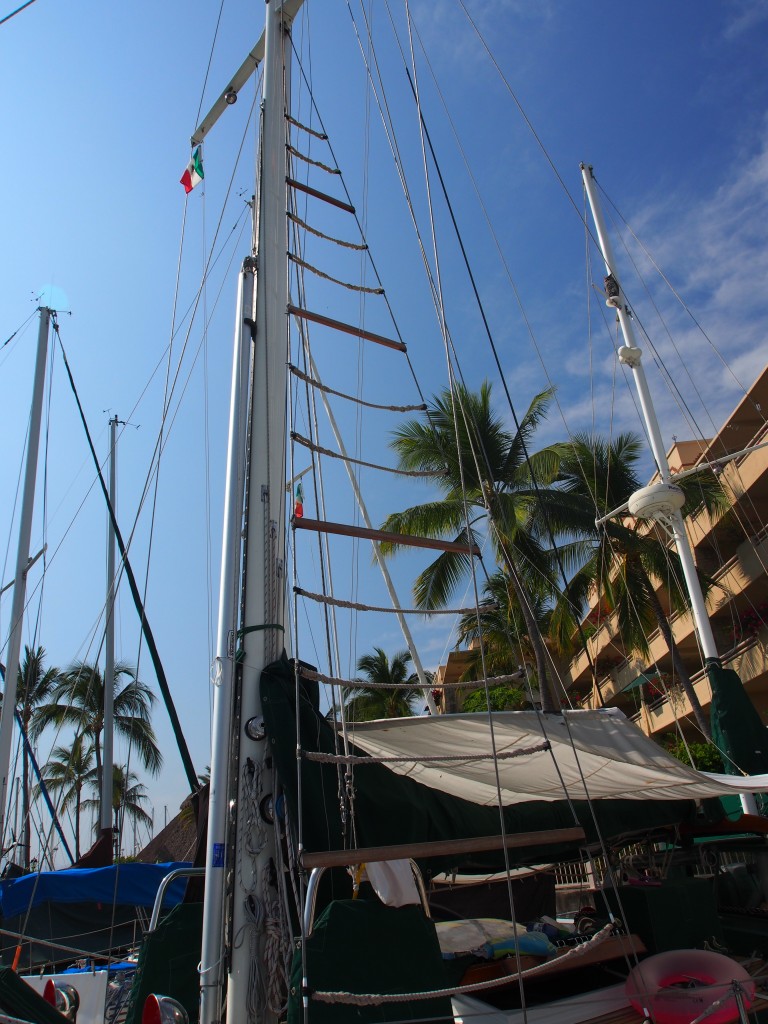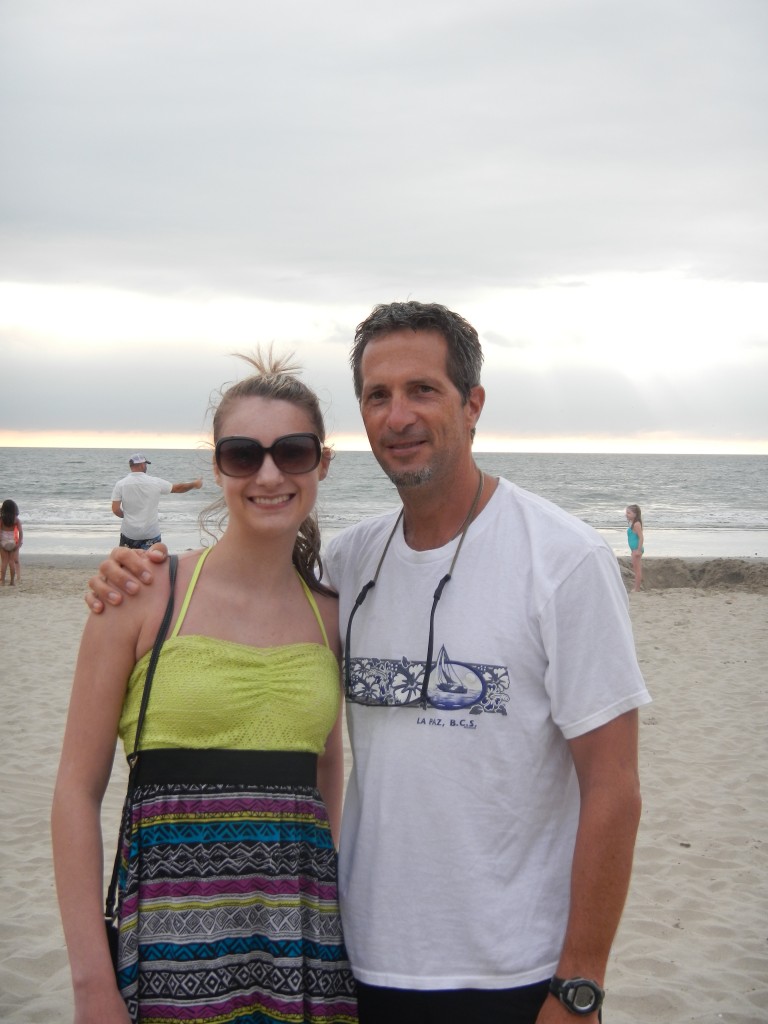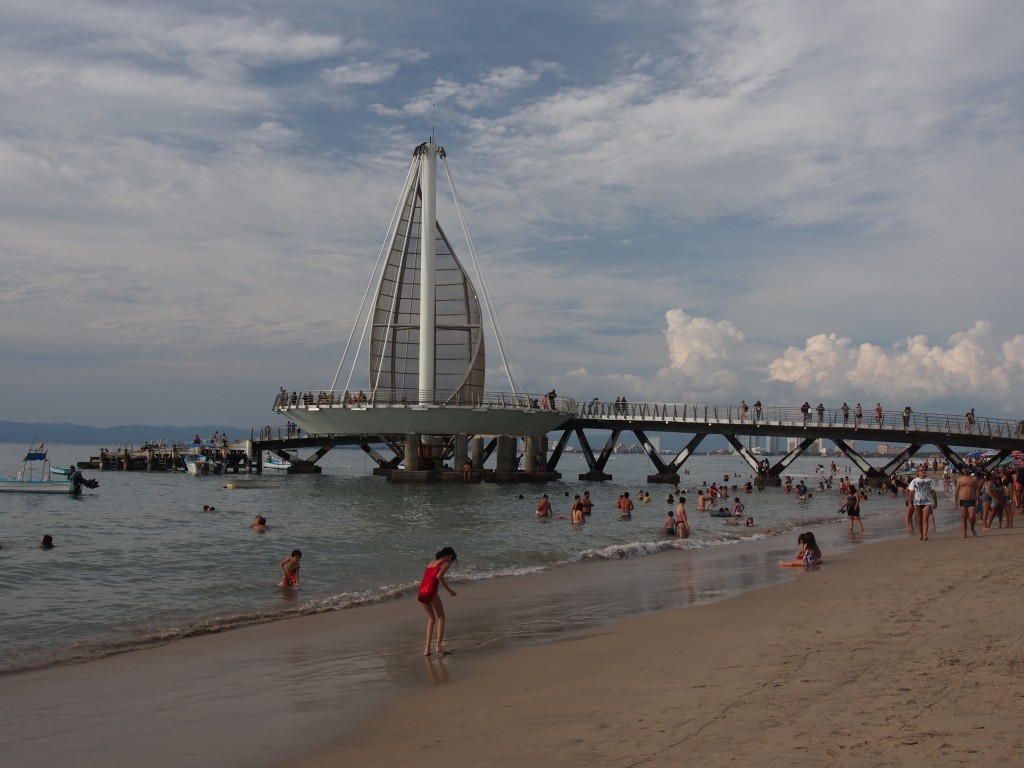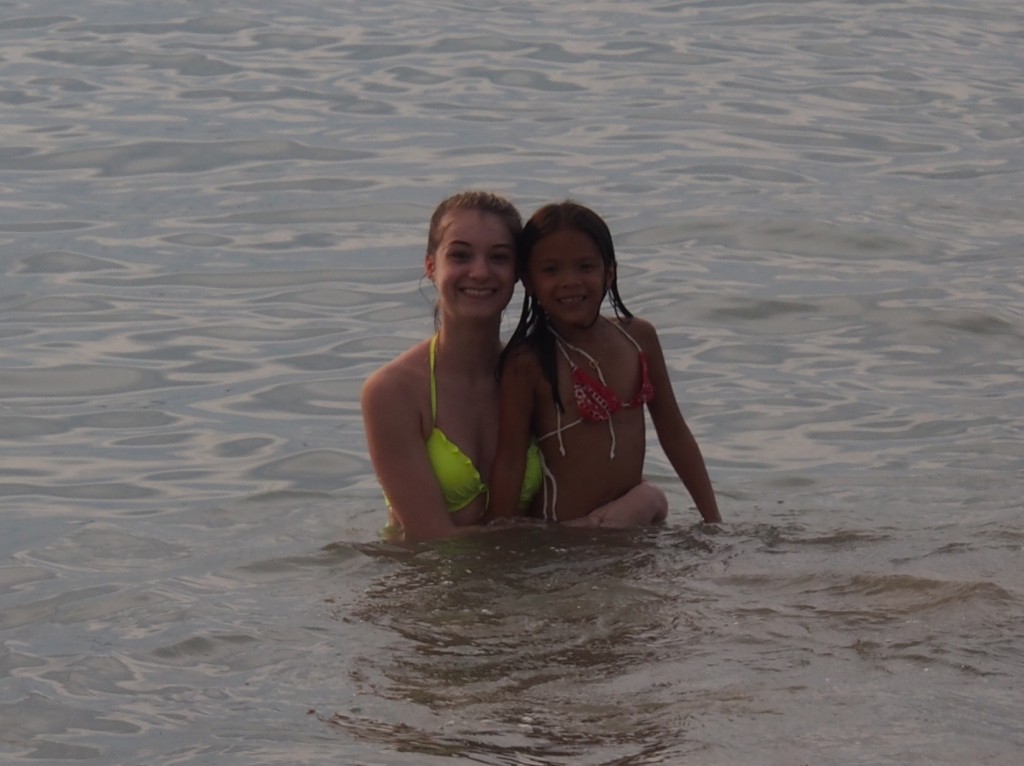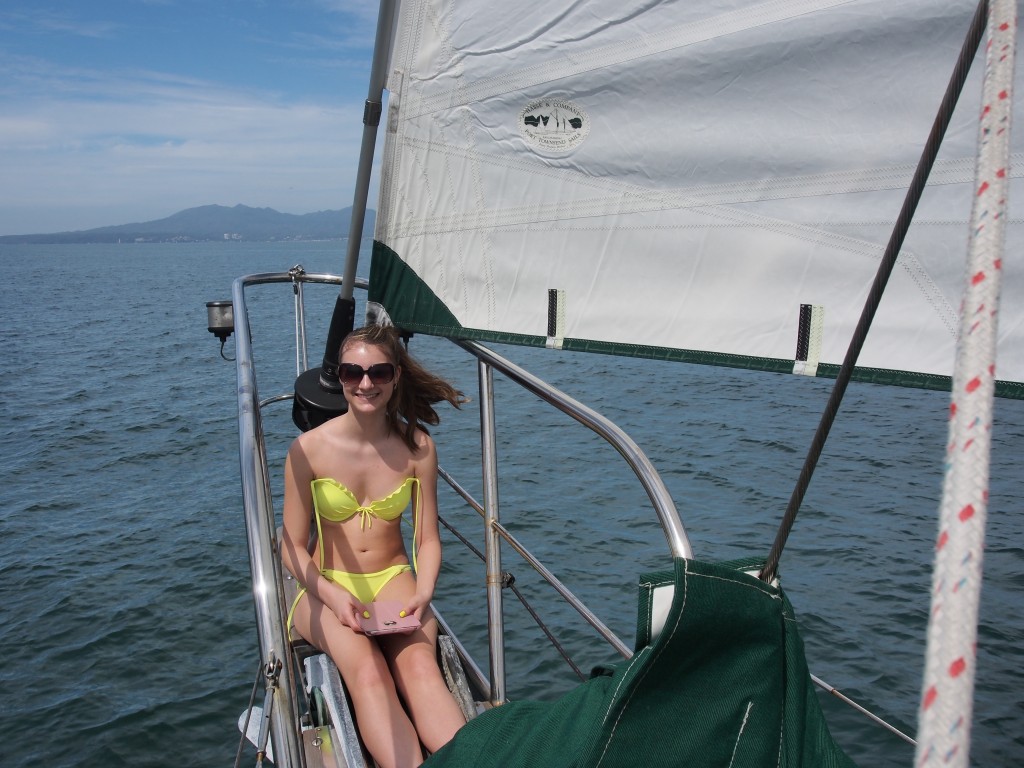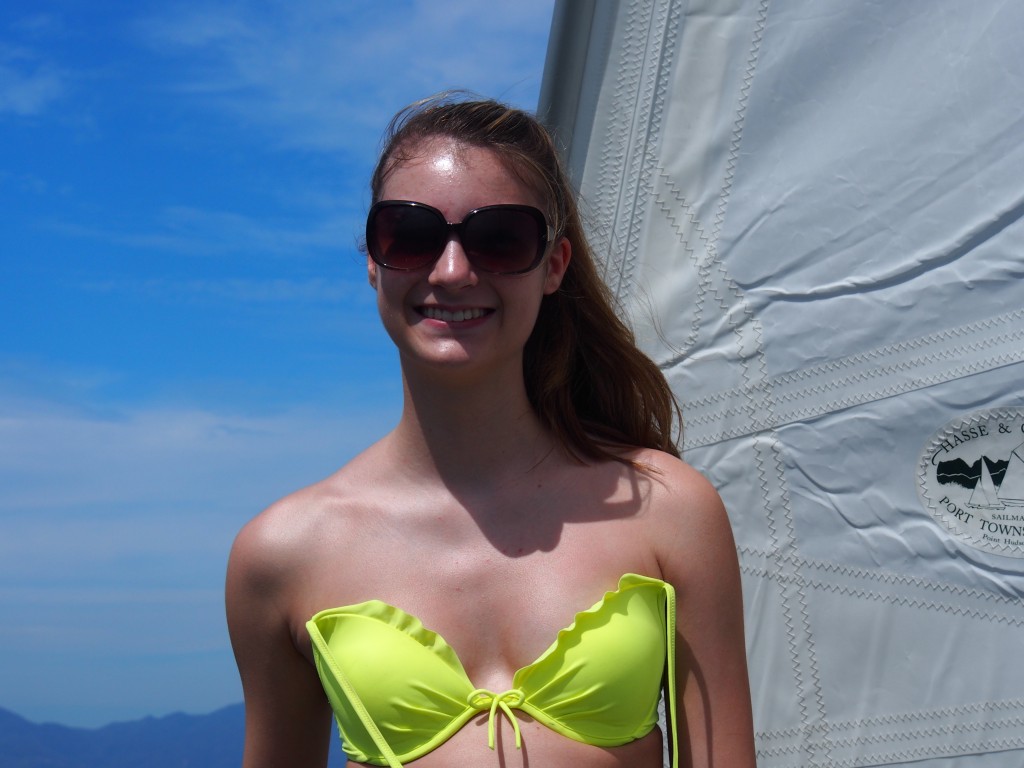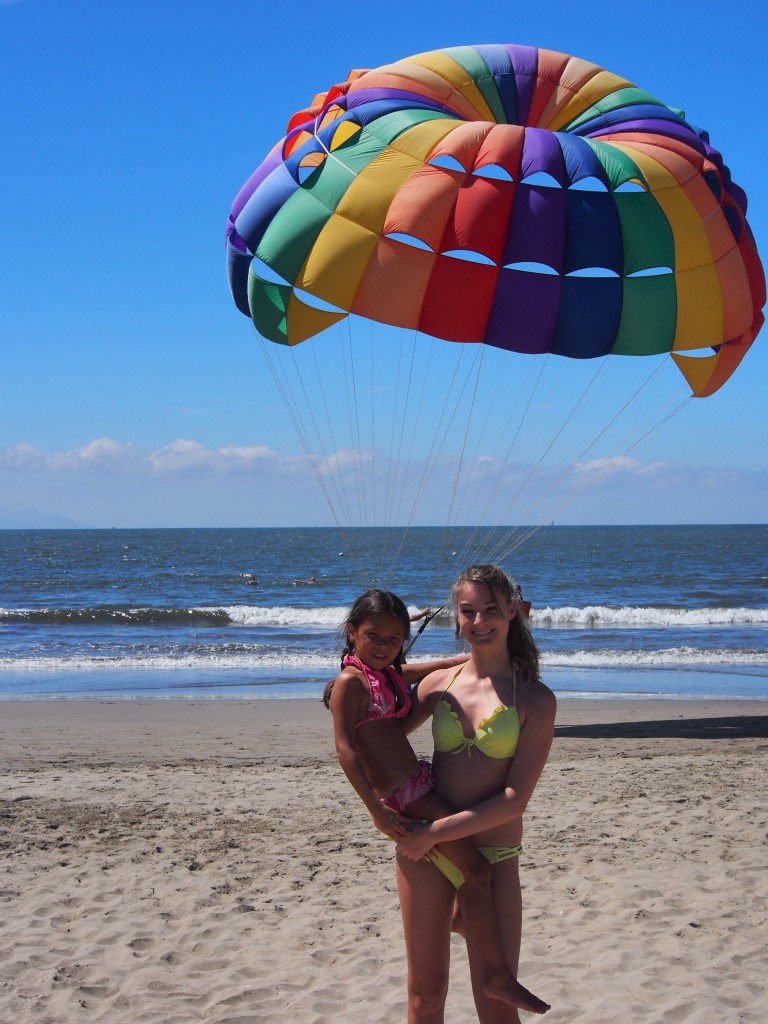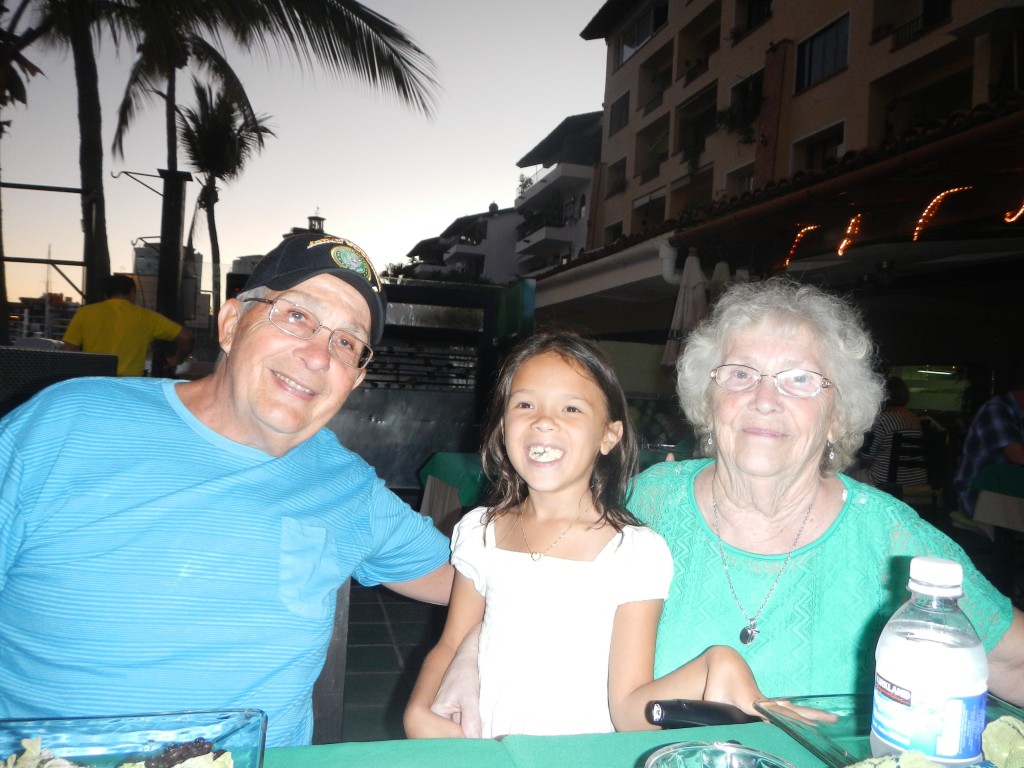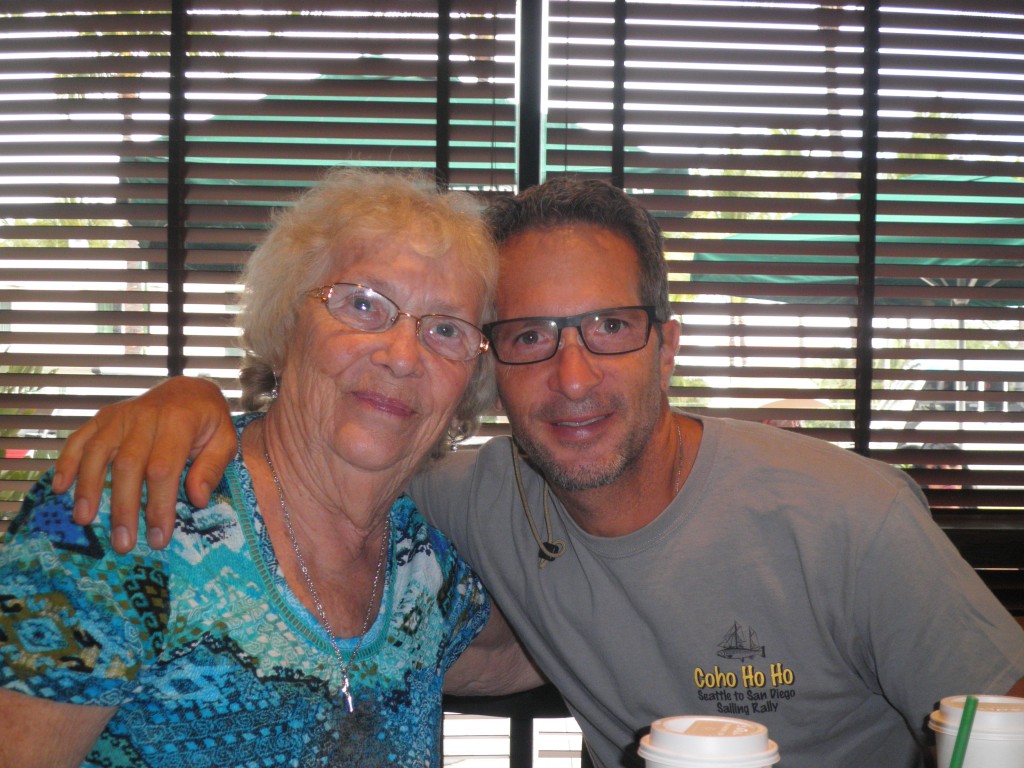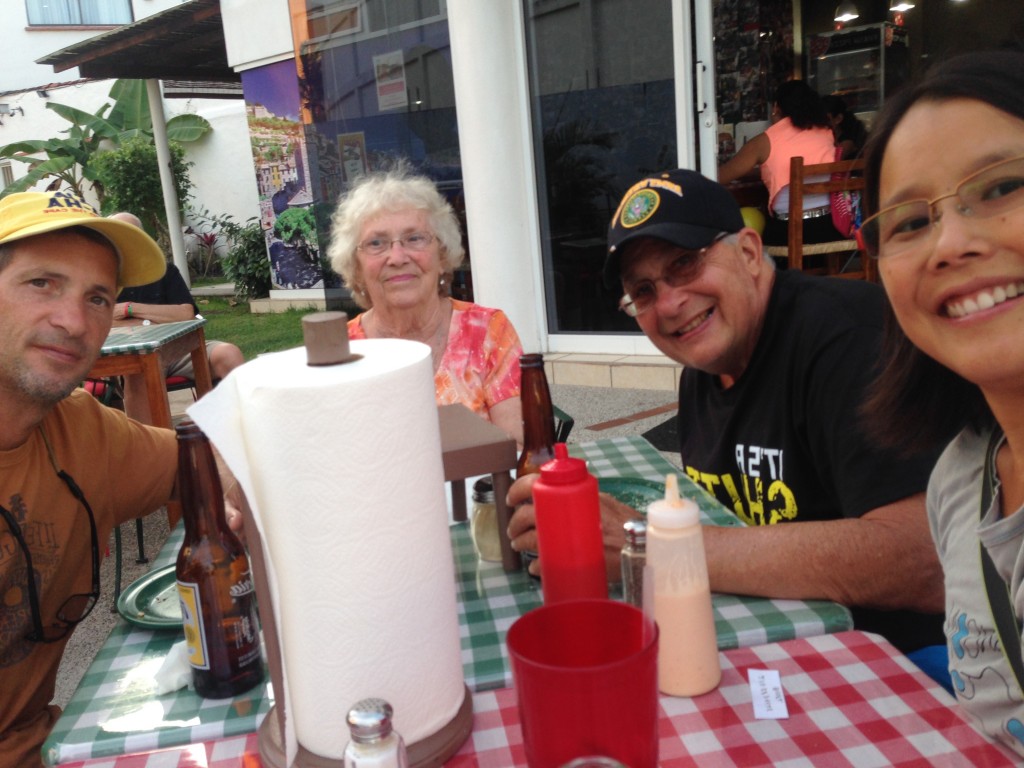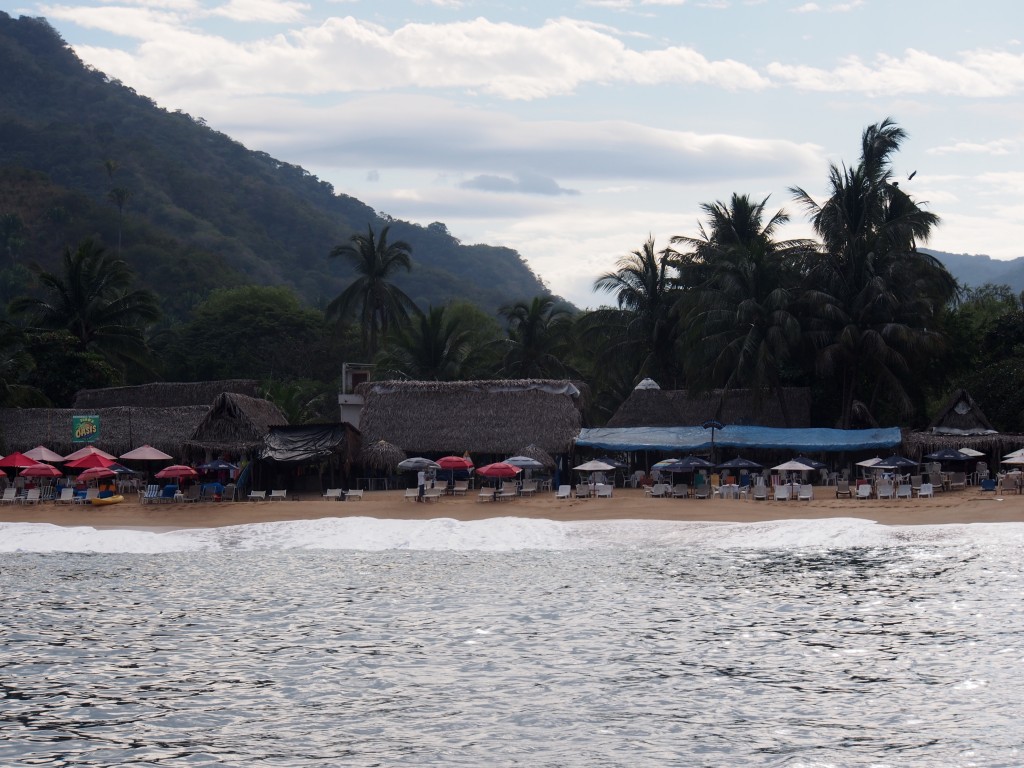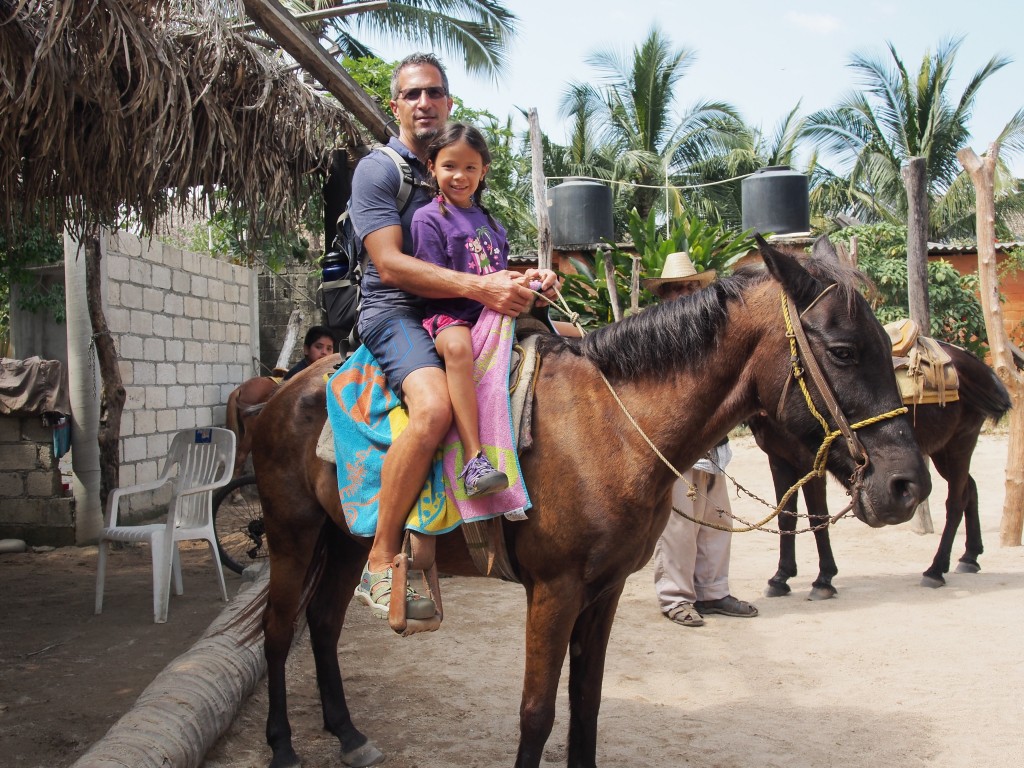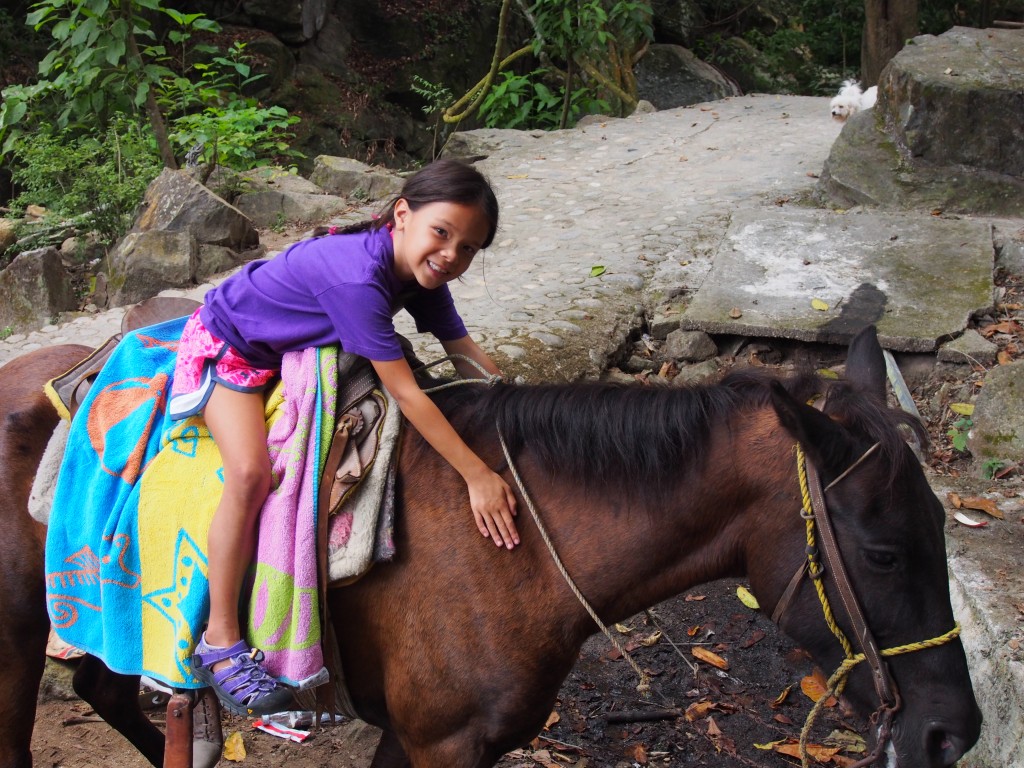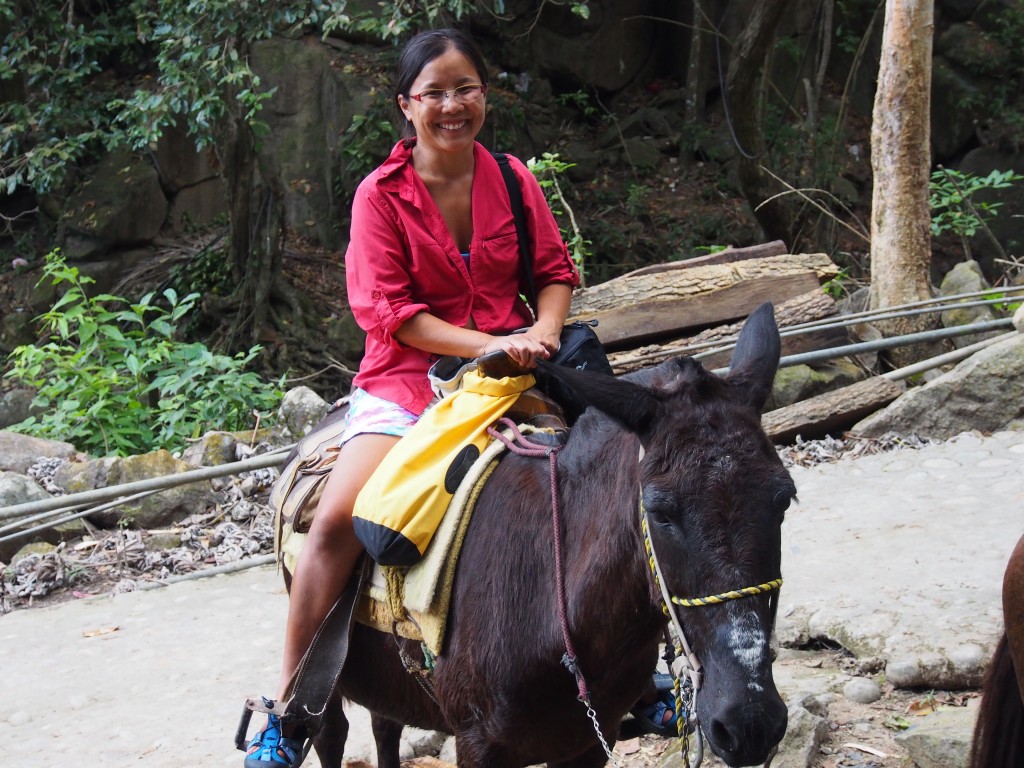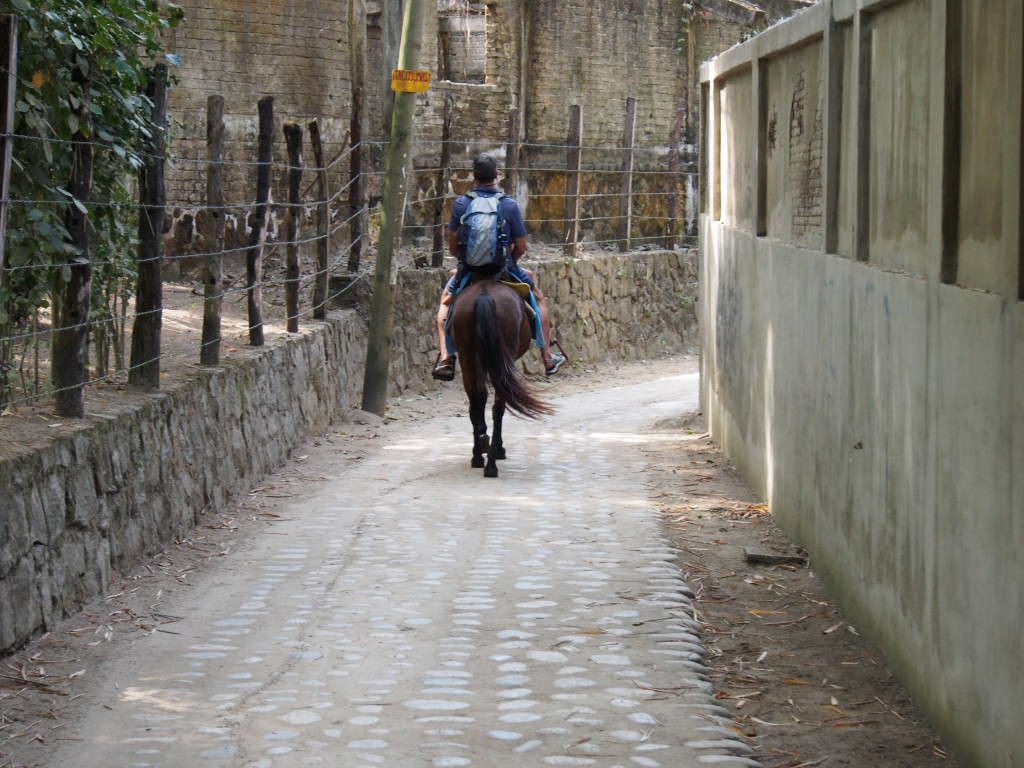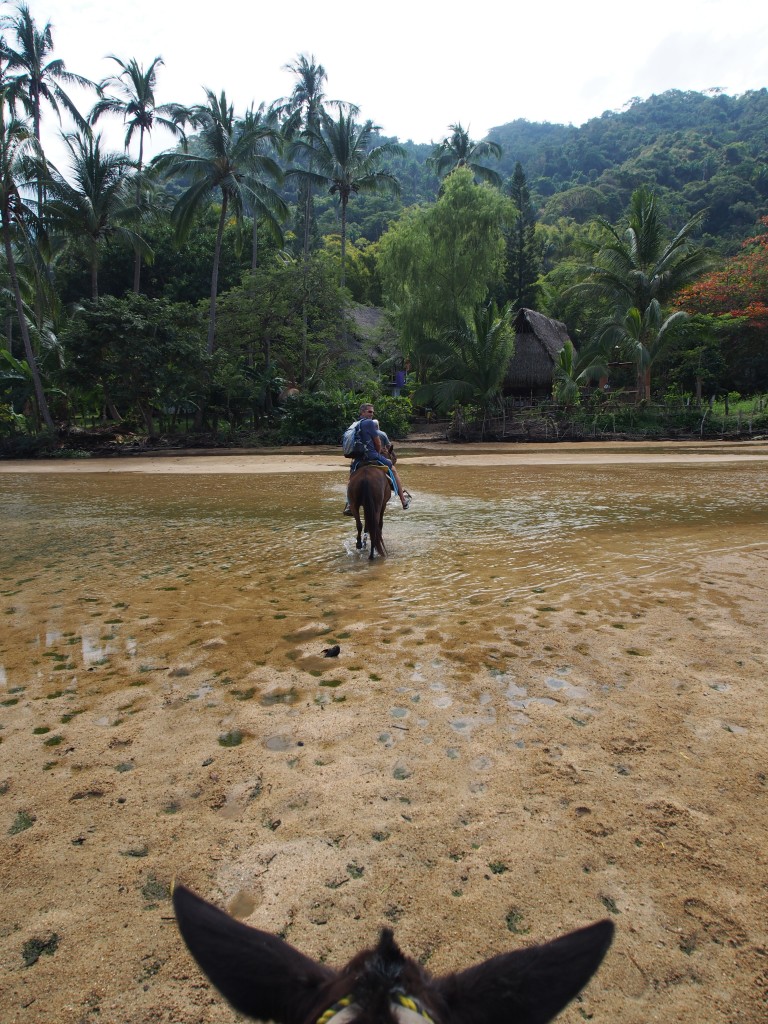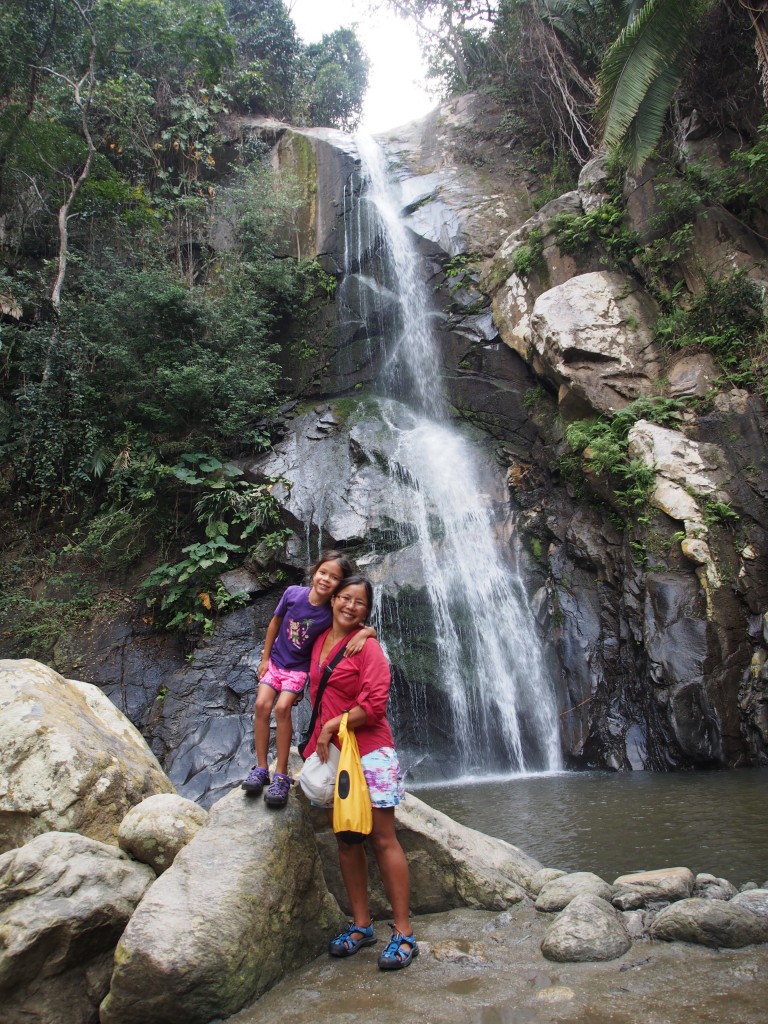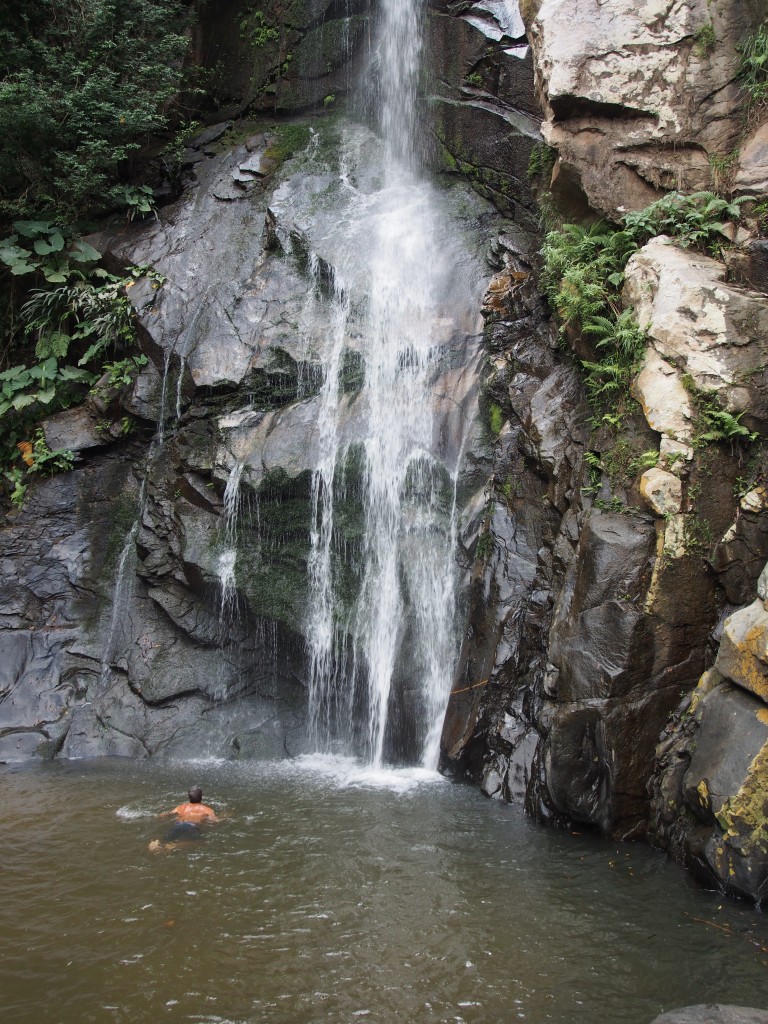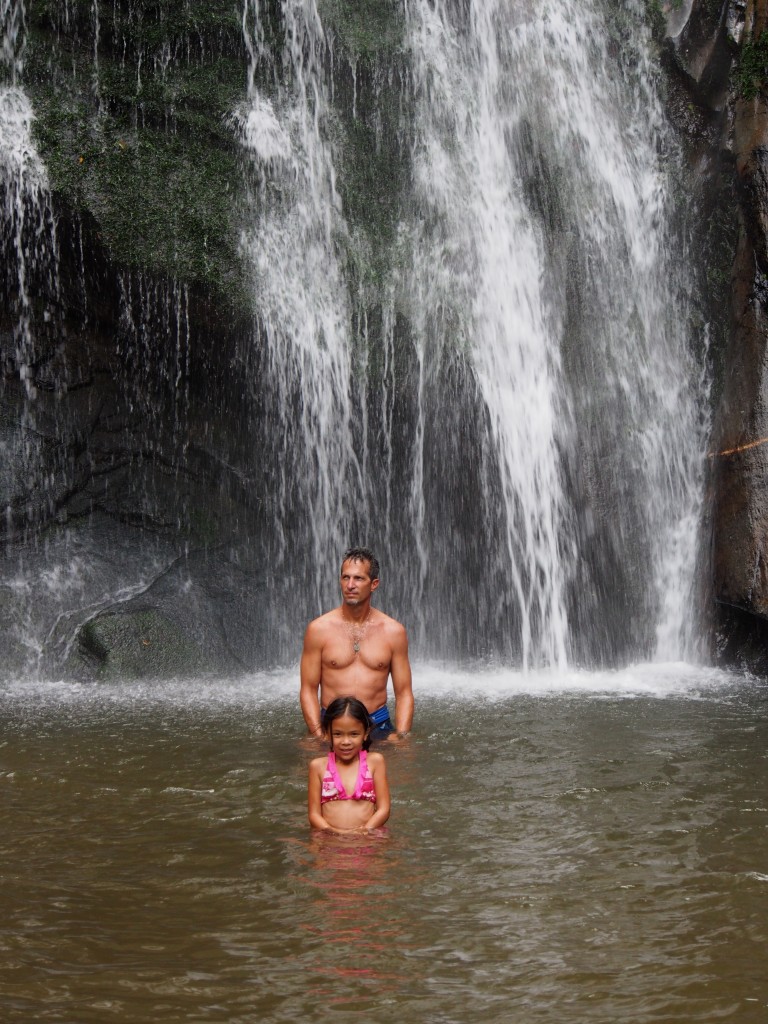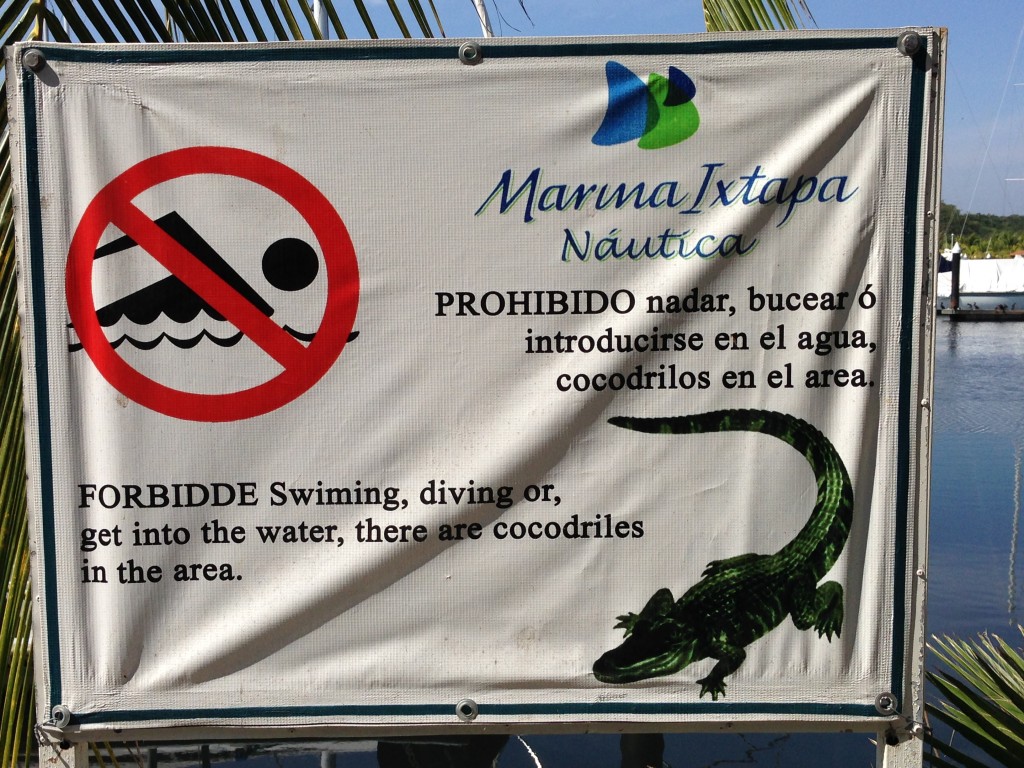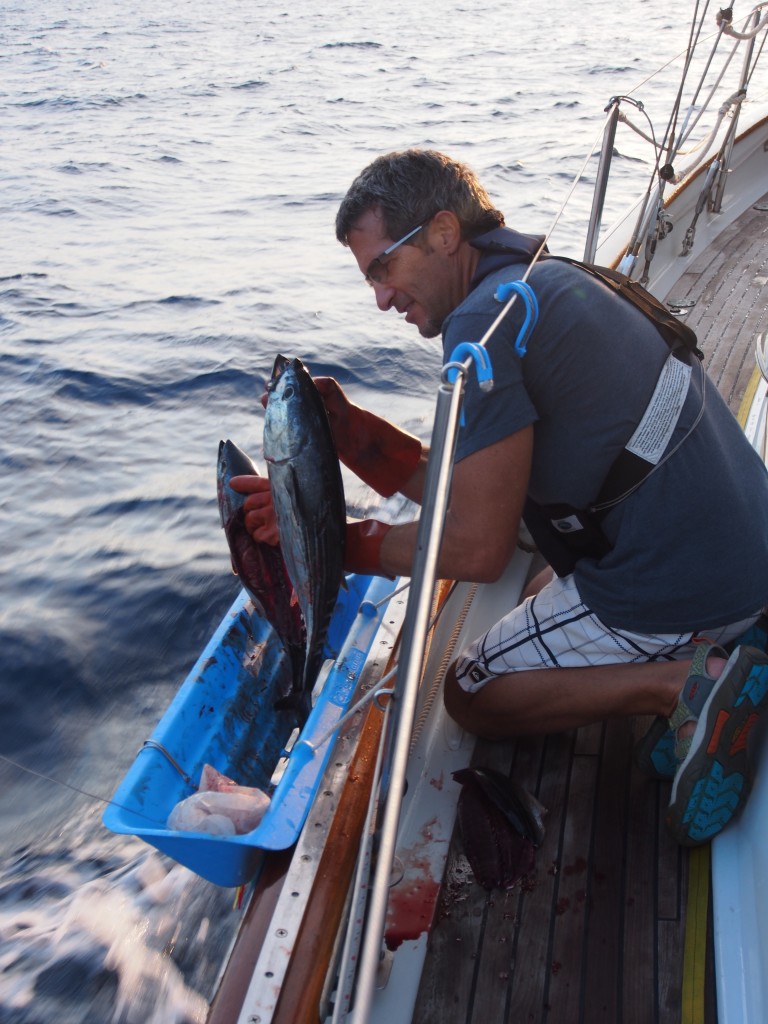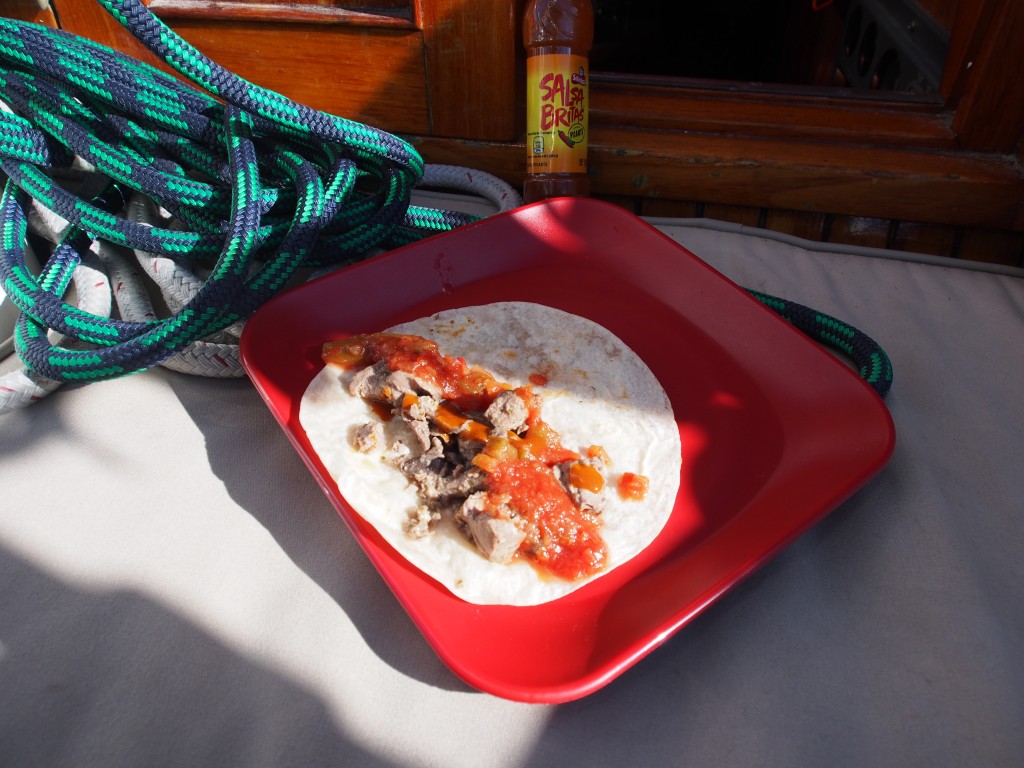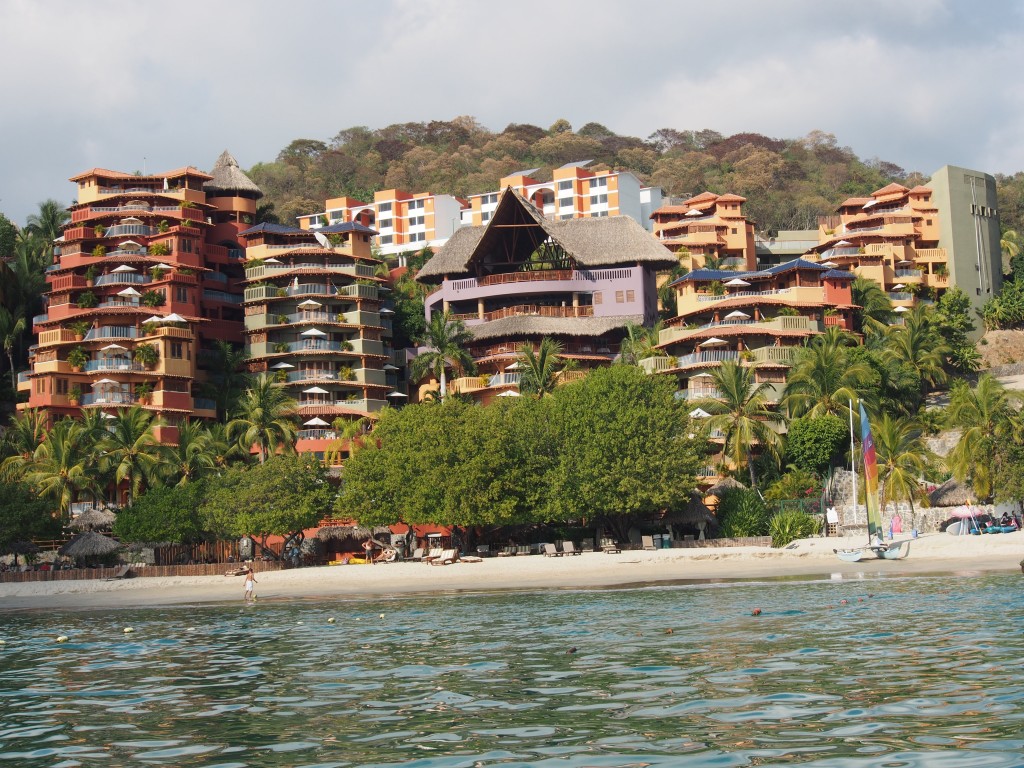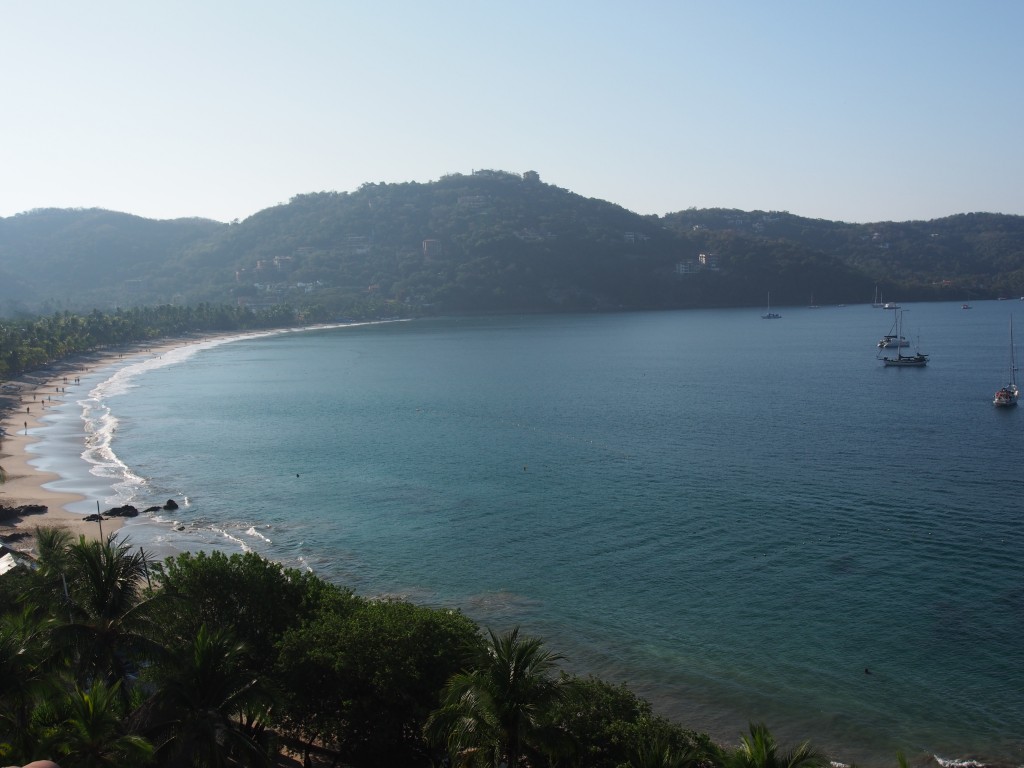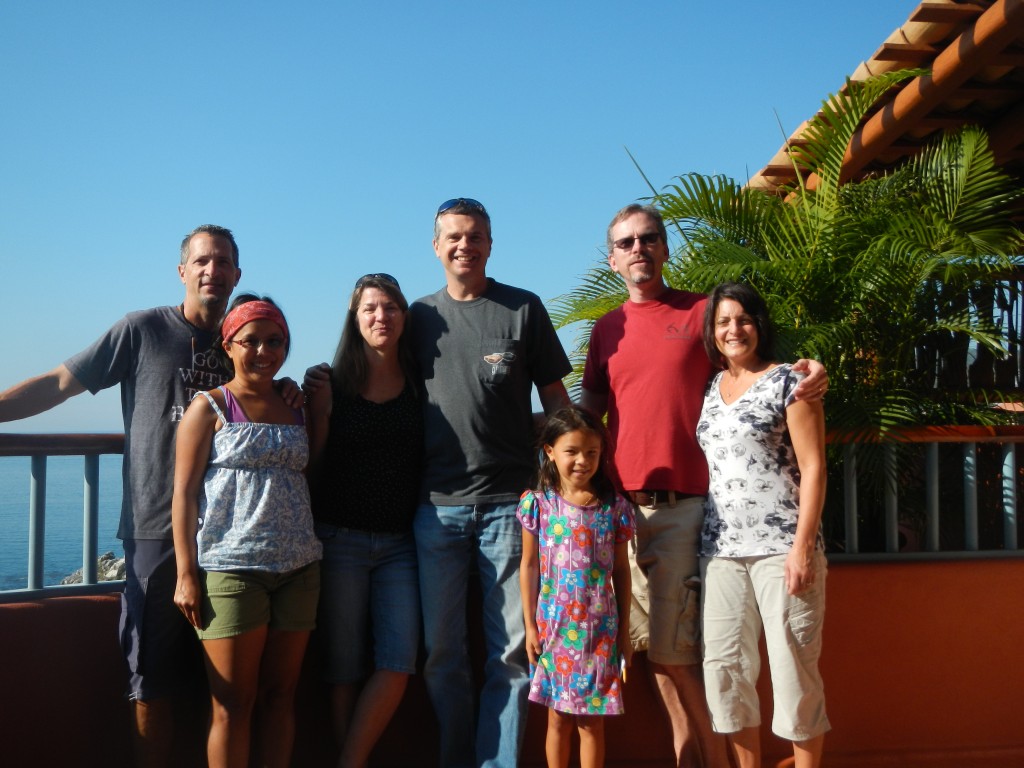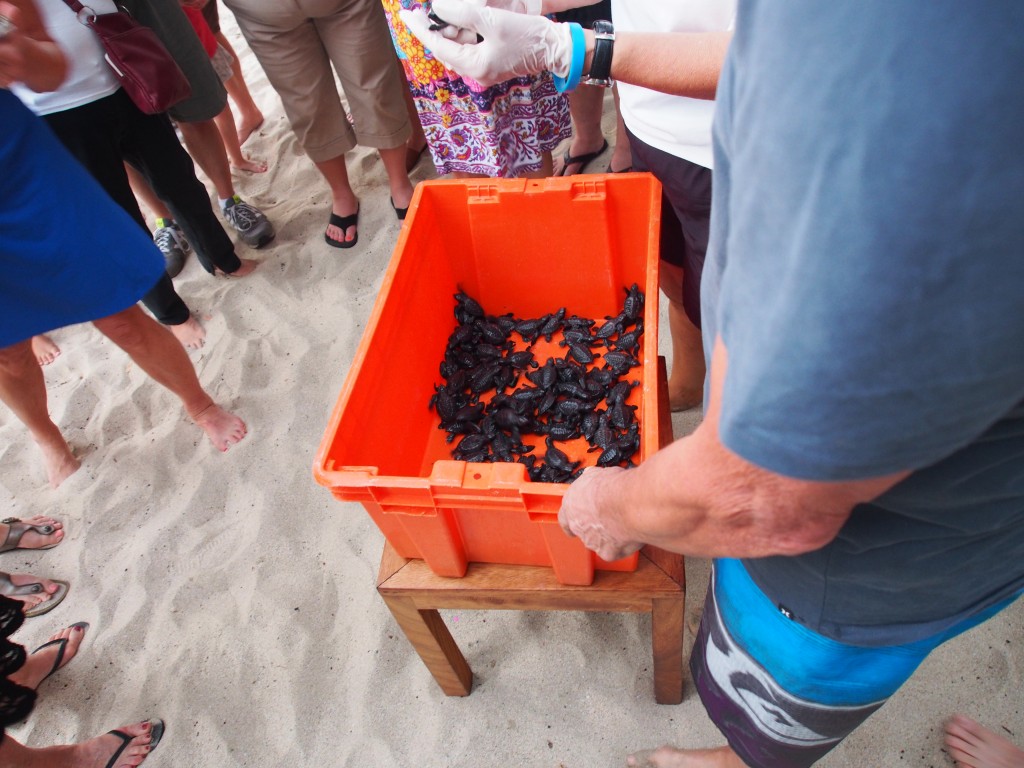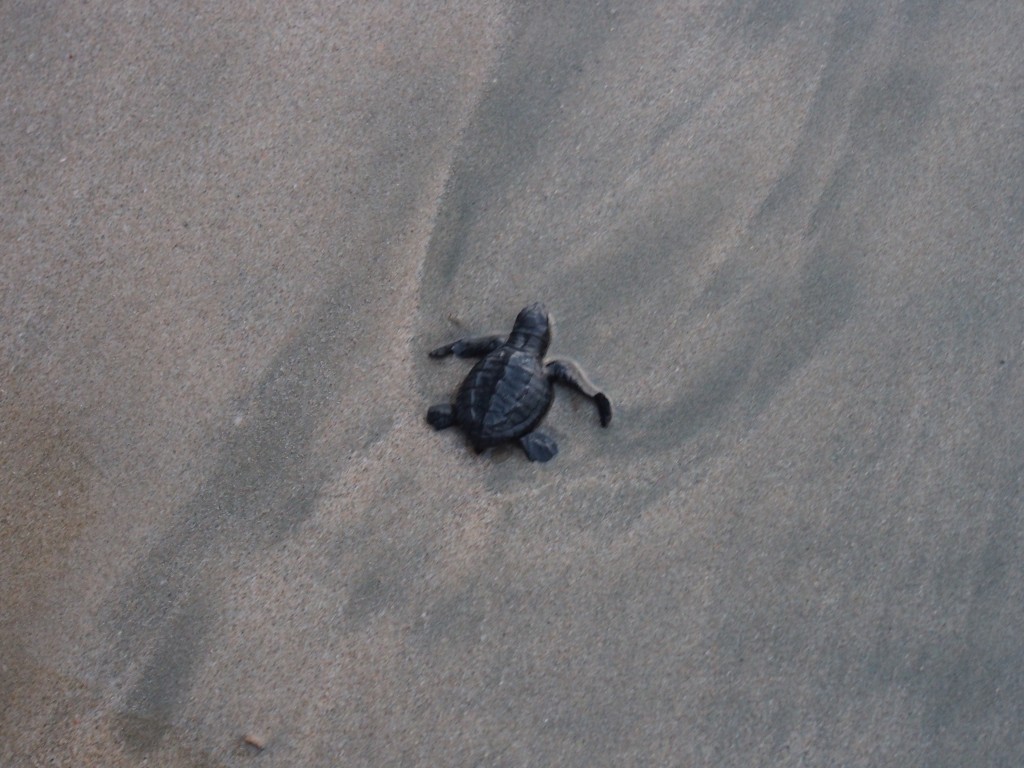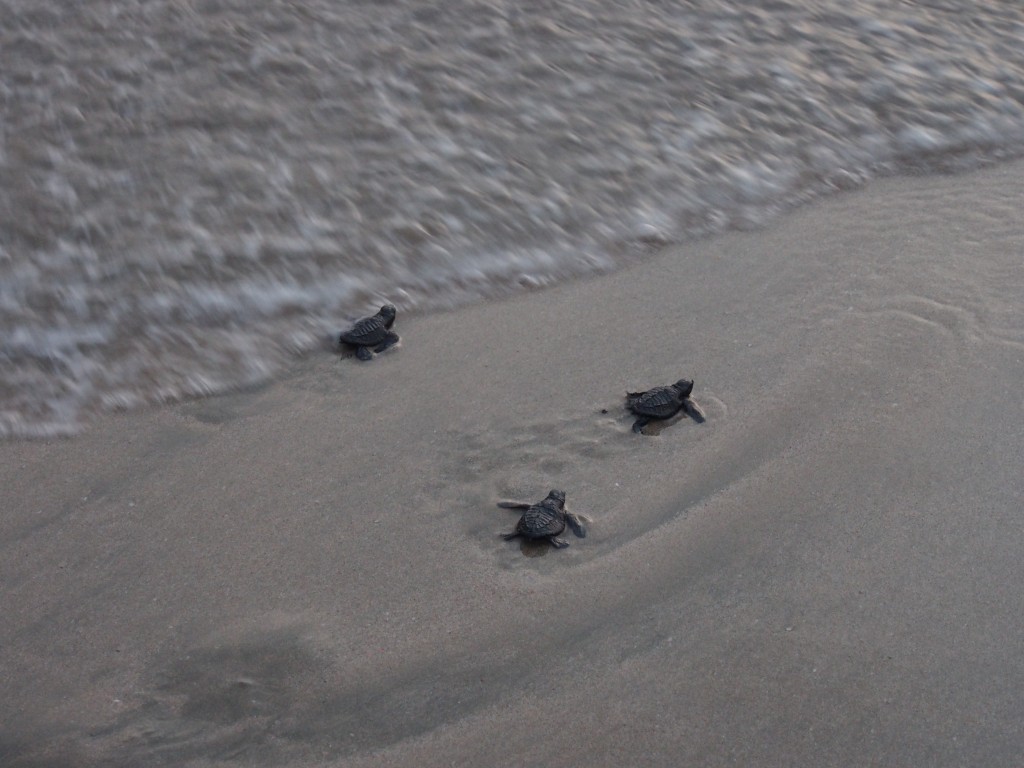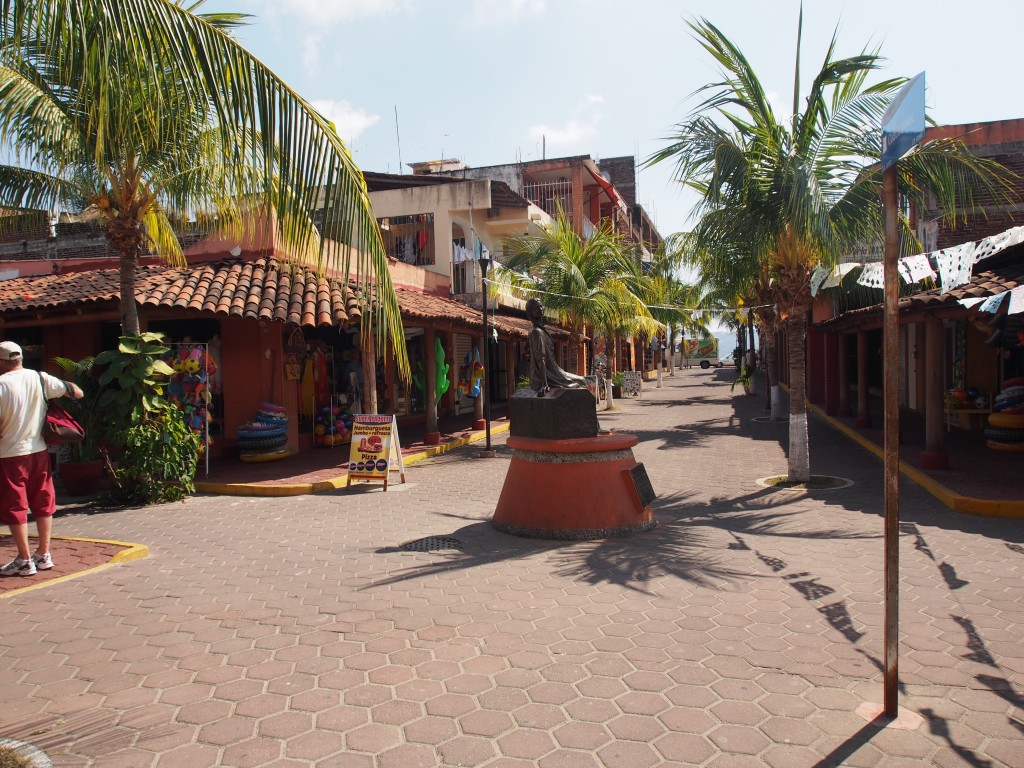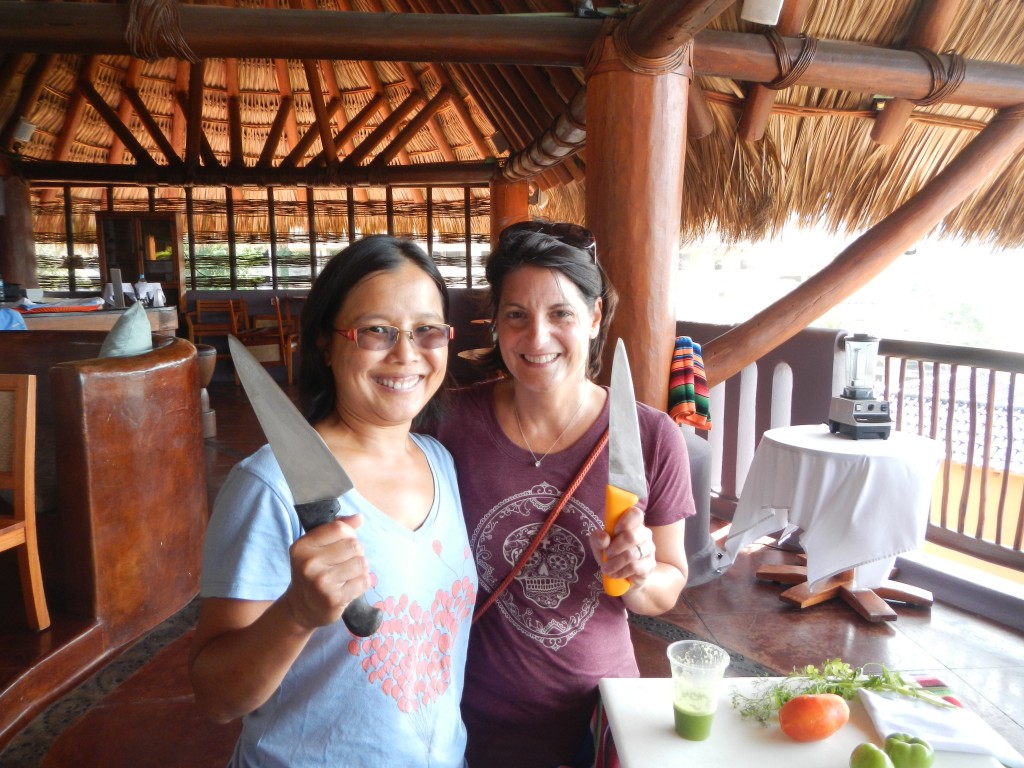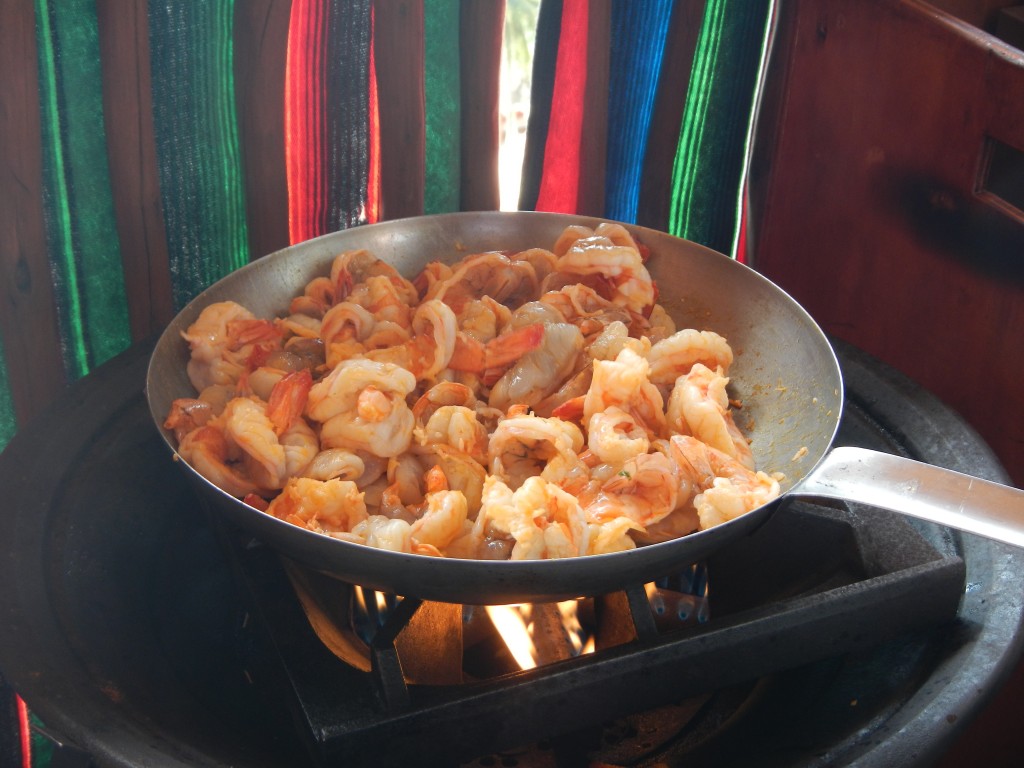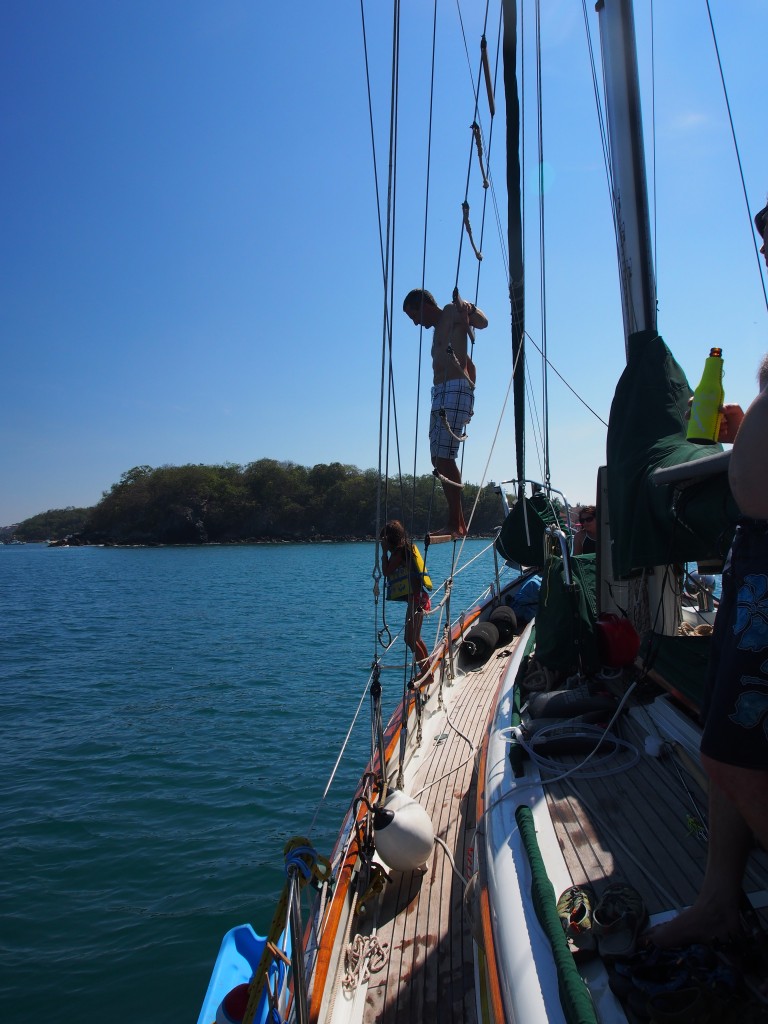Hi from Apropos in Fatu-Hiva, one of the Marquesas Islands in French Polynesia. We’re so glad we decided to stop here for a few days before going to the downwind islands of Hiva-Oa, Ua-Pou, and Nuku-Hiva. The anchorage is surrounded on 3 sides by steep mountains covered in green, with coconut trees along the shore and part way up the mountain-side. Jacintha and I slept in the cockpit last night and woke up at 6am to daylight, a cool breeze, and the scent of fruit and flowers coming off the land. We took the dinghy to shore in the morning just as it was starting to get hot (I had to jump in the water to cool off while waiting). Once we got around the small rock breakwater we were surprised to see a small village, which couldn’t be seen from the boat anchorage. Standing on land for the first time in 24 days was strange–maybe we had a touch of land-sickness. A man came to the docking area to great us (in French, with a little broken English). He wanted to know who was the captain and mechanic, and all fingers pointed to me. He hurriedly lead us to his house and showed us his broken washing machine and asked if I could fix it. It was an outdoor unit made of plastic with 2 lids–one for washing and one for spinning–and the spinning part no longer spun. Nick and I removed some screws on a back panel to gain access to the inside. I poked around and saw 2 electric motors and the one for doing the spinning wasn’t turning on. About all I could do without tools and a multimeter was to inspect a fuse (good) and check some wire connections (good). The 4 wires (they use 220V here) that connected to the motor were not accessible without taking the motor out. So after about an hour, I had to tell the man I couldn’t fix it. He then offered us a bag-full of Pamplemousse (very large, sweet grapefruit) for trade, and asked if we had a spare dive mask (glass, not plastic). Nick happened to bring 2 so we told him we would bring one back after we hiked to the waterfalls. It took us about 90 minutes to hike to the falls, first along a paved road where we passed about a dozen houses, cows, horses, goats, and boars tied to trees, lots of free range chickens, and lots of dogs. After a mile the paved road turned into a dirt road. Soon the road ended and we were trekking through waist-high brush, then scrambling over boulders. Eventually we reached a beautiful 200 foot waterfall with a deep pool at the base. We jumped in the water which was cold at first but felt great. The water ran along the sheer rock wall that the sun was shining on, so when we sat on a small ledge at the base, the water coming off the face was warmer than that in the deep pool acheter kamagra oral jelly pas cher. After getting out we warmed up on some large flat rocks in the sun. This was truly an amazing experience and well worth the trek there and back. On the walk back to the village, we picked a bunch of bananas from a tree along the road. Back at the village, a woman asked us if we wanted to see some wood carvings. Between our broken French and her broken English, we had some conversation as she displayed the Tiki carvings from rosewood and ebony. Her husband had a nice shop with electric tools such a a lathe, grinder, and buffer. Since we hadn’t been to a bank to exchange money, we had no French francs (the local currency). She didn’t want US dollars but would accept Euros, which Nick had. Even though we decided not to buy anything, she happily sent us off with a large bunch of bananas and some small fruit she said would be good in a salad. As we continued to walk, we began passing children walking home from the small school, some with their parents and some alone. We stopped to take pictures of the 2 boar, and 4 curious kids stopped next to us. We exchanged Bon Jours and then Karen pointed the camera at them to take a picture and immediately the turned away and put their hands over their faces. When she lowered the camera, they came back. We exchanged names and learned that 2 of them were neuf (9) and 2 were huit (8). They were curious about the camera so we showed them the picture of the boar we had just taken. As we walked past the house of the man with the broken dryer, we picked up the sack of Pamplemousse and continued past the school, where a dozen kids were playing soccer on a big slab of concrete. As we neared the dingy, the man was sitting along the road and reminded us about the dive mask and we told him we would go to the boat and bring it back. The spare mask that Nick had was plastic and the elastic strap was not in good condition, but we took it back to his house. He didn’t look too excited with it and asked if we had any wine or fishing lures! Back at the boat, we were all very hungry and tired. Nick and I replace the VERY chafed windvane line that had steered us for 2800 miles with a new line and got the dinghy back onto the boat while Karen cooked spaghetti with minced meat and anchovies. After we ate dinner in the cockpit, Jacintha fell fast asleep. Nick soon followed and Karen is reading on her Kindle as I type this email. We plan on leaving this bit of paradise tomorrow morning and sailing to Hiva-Oa, 48 miles away.
